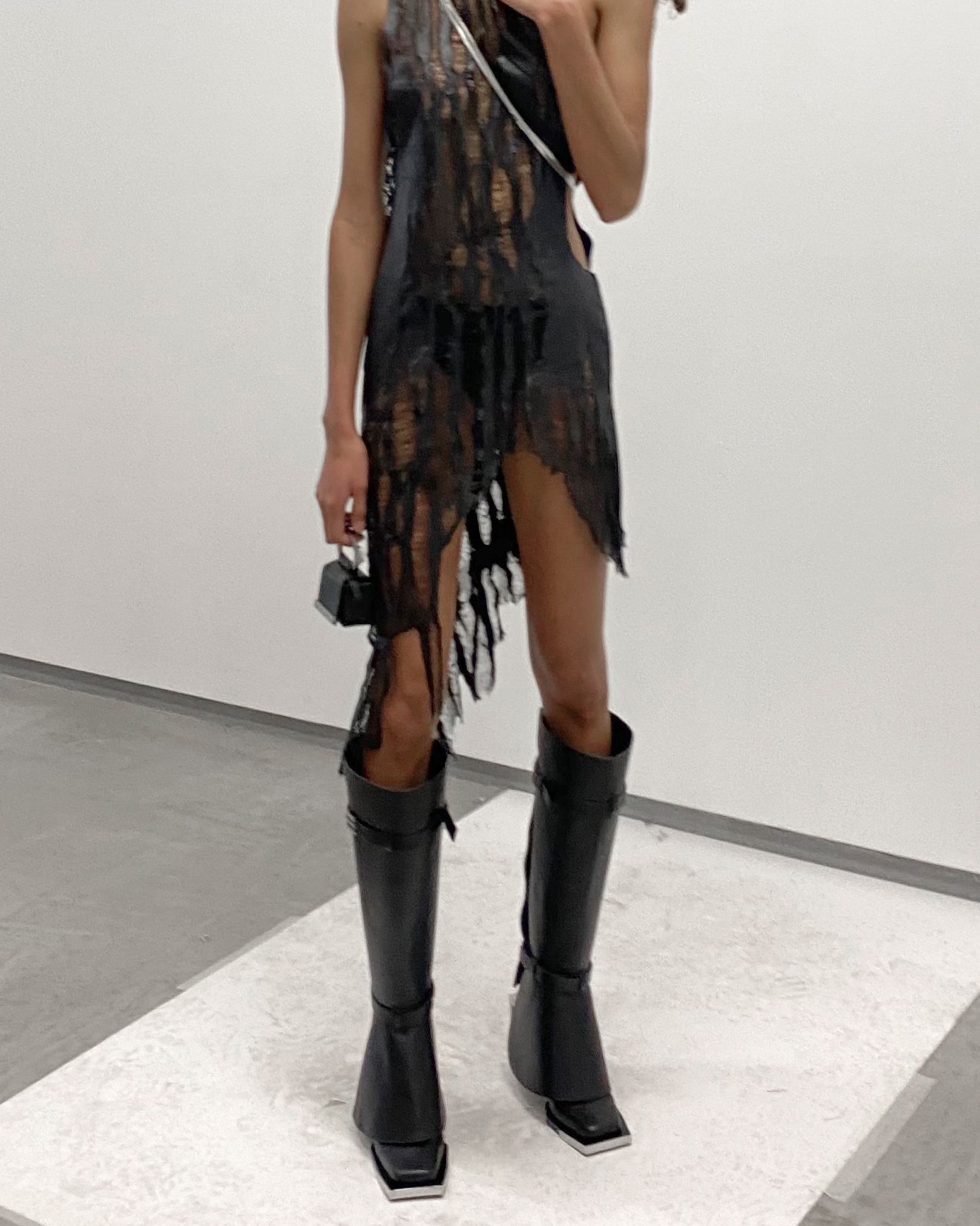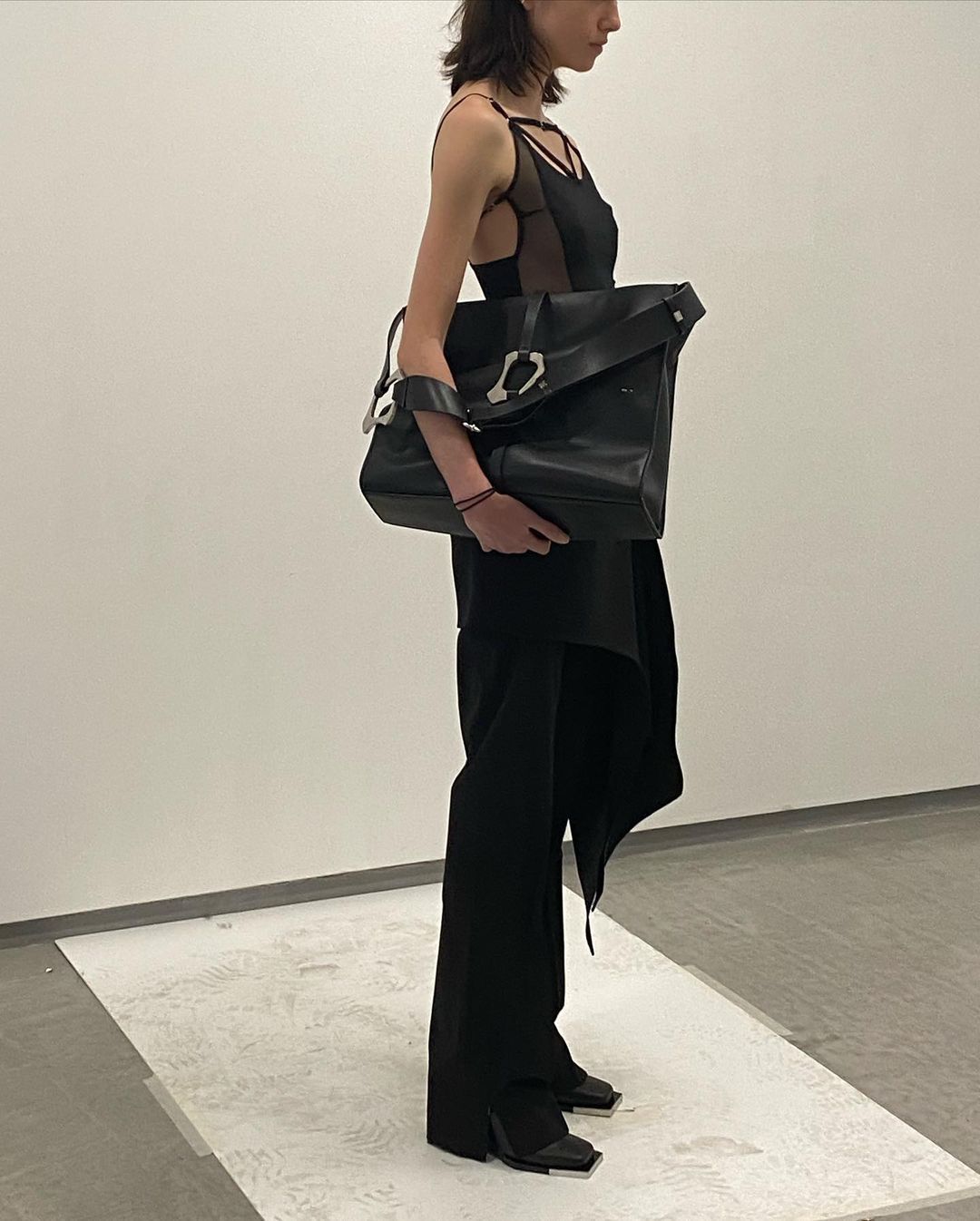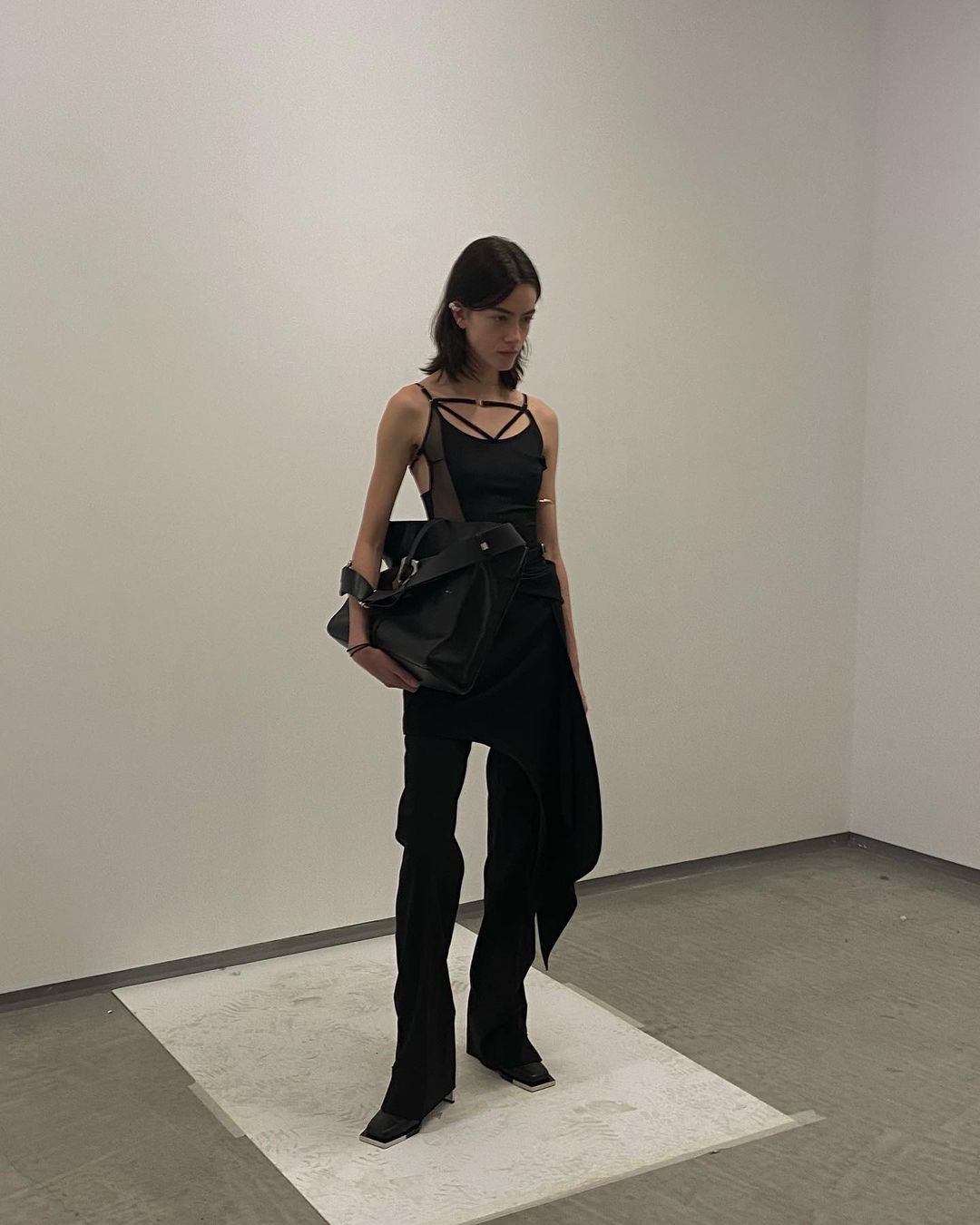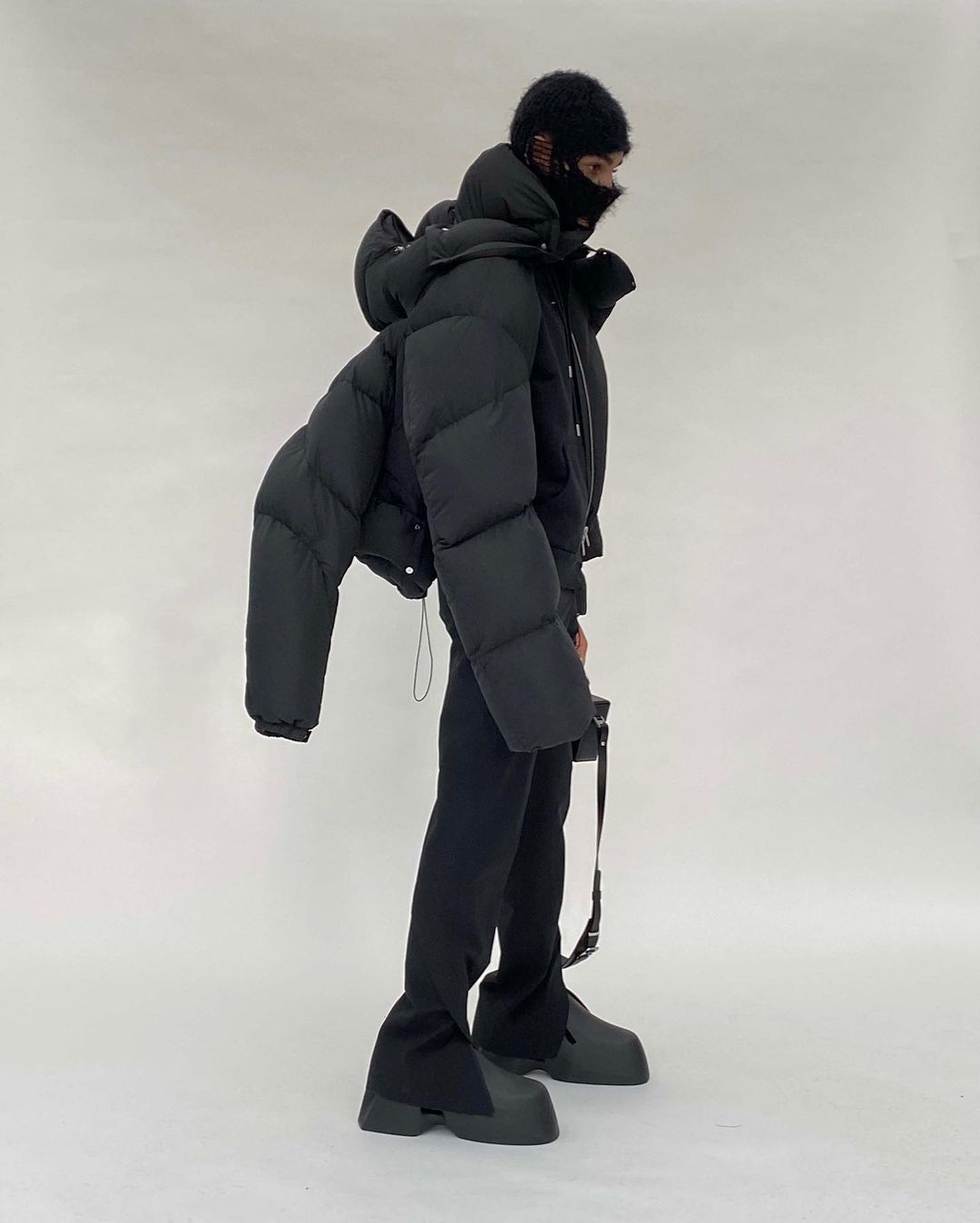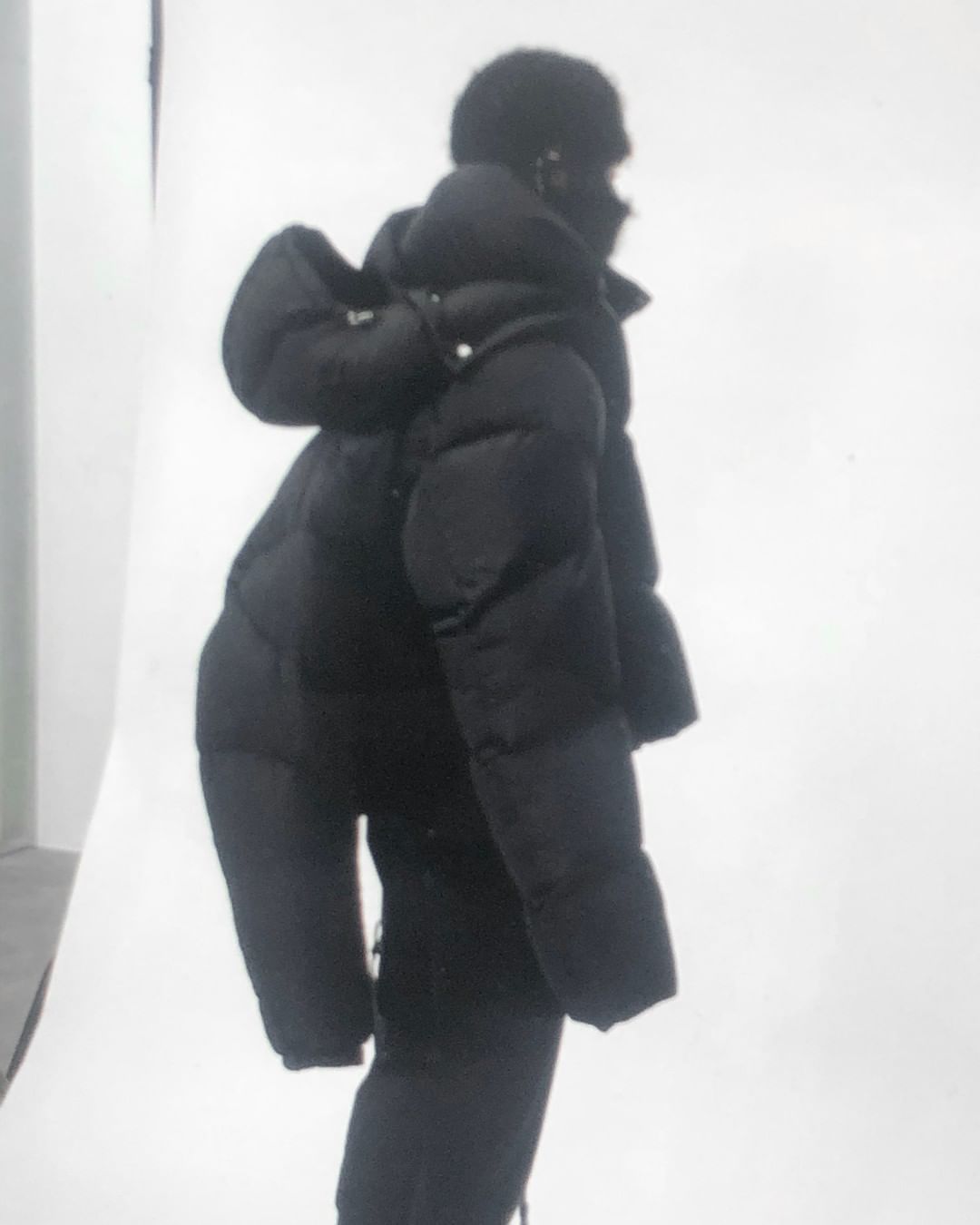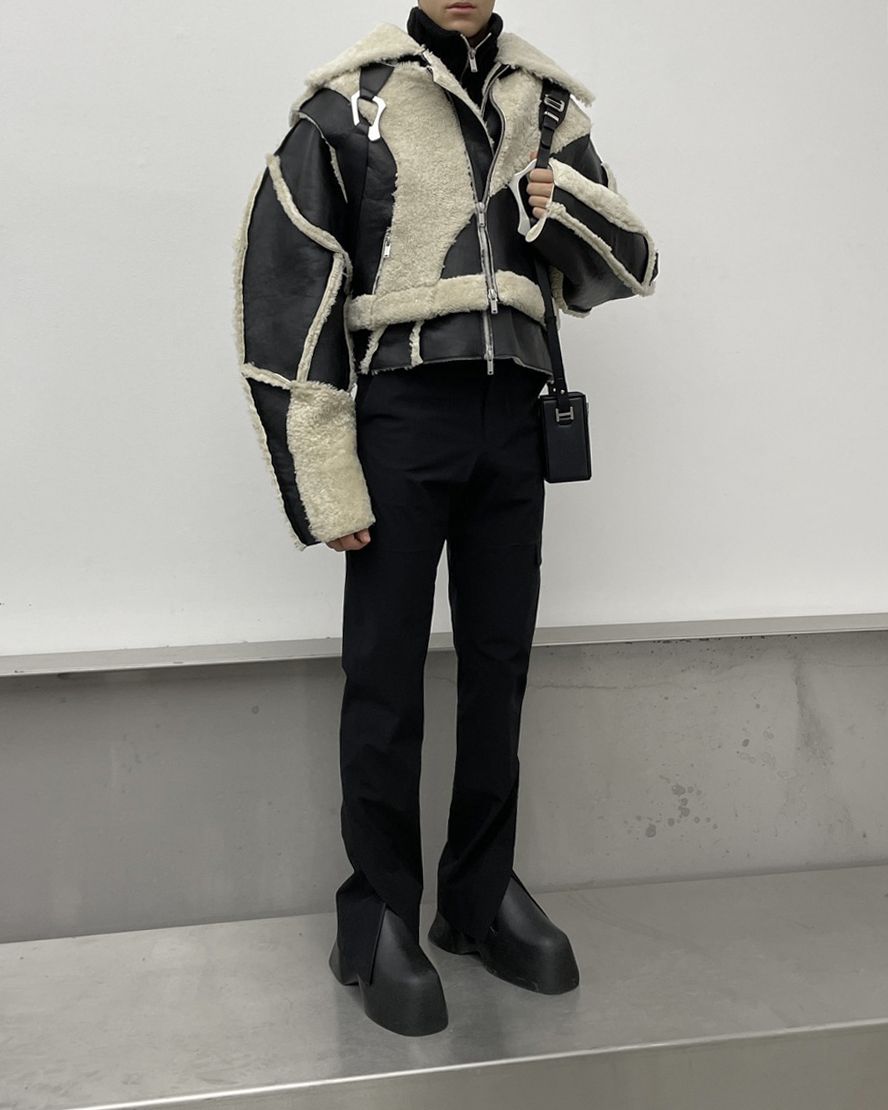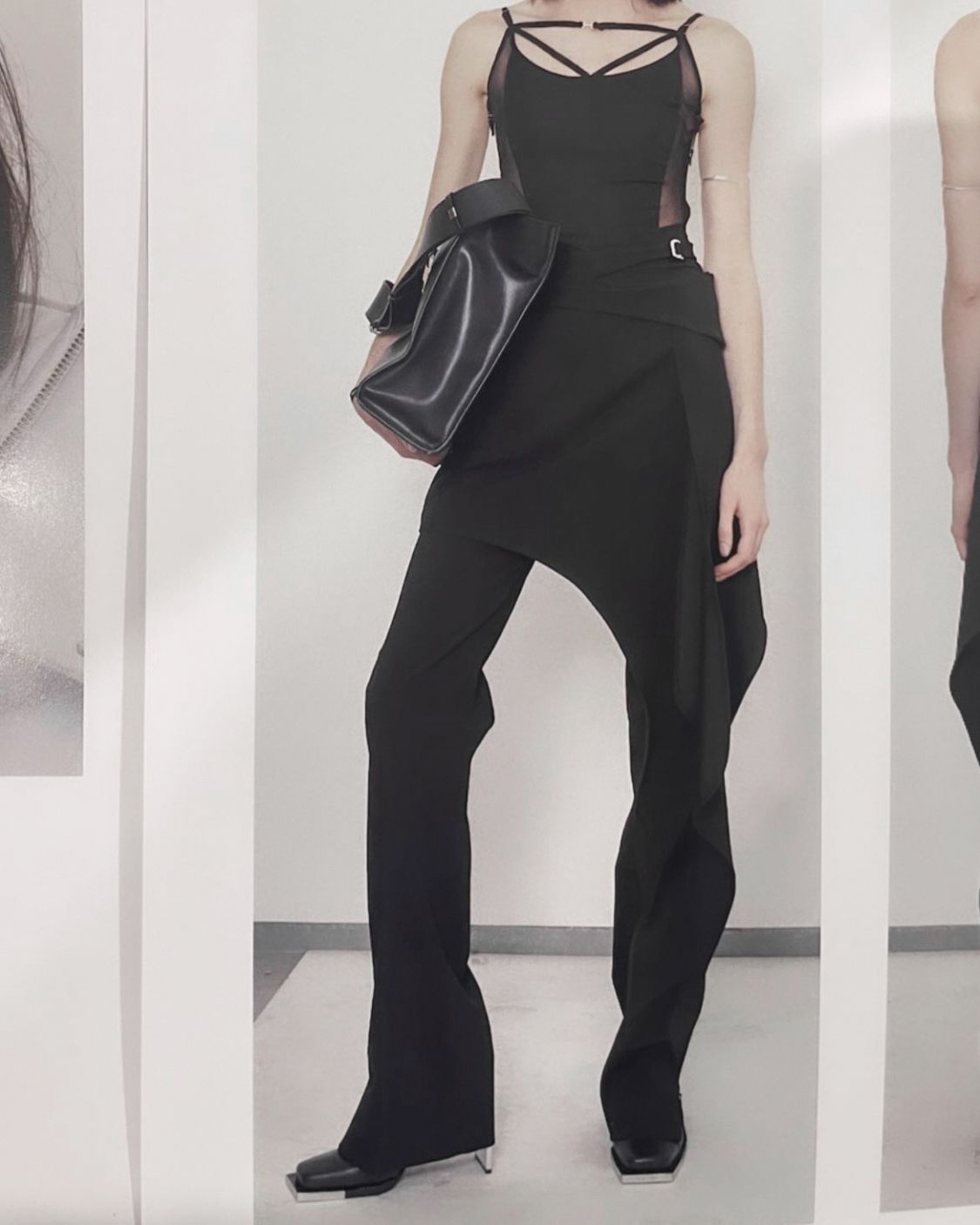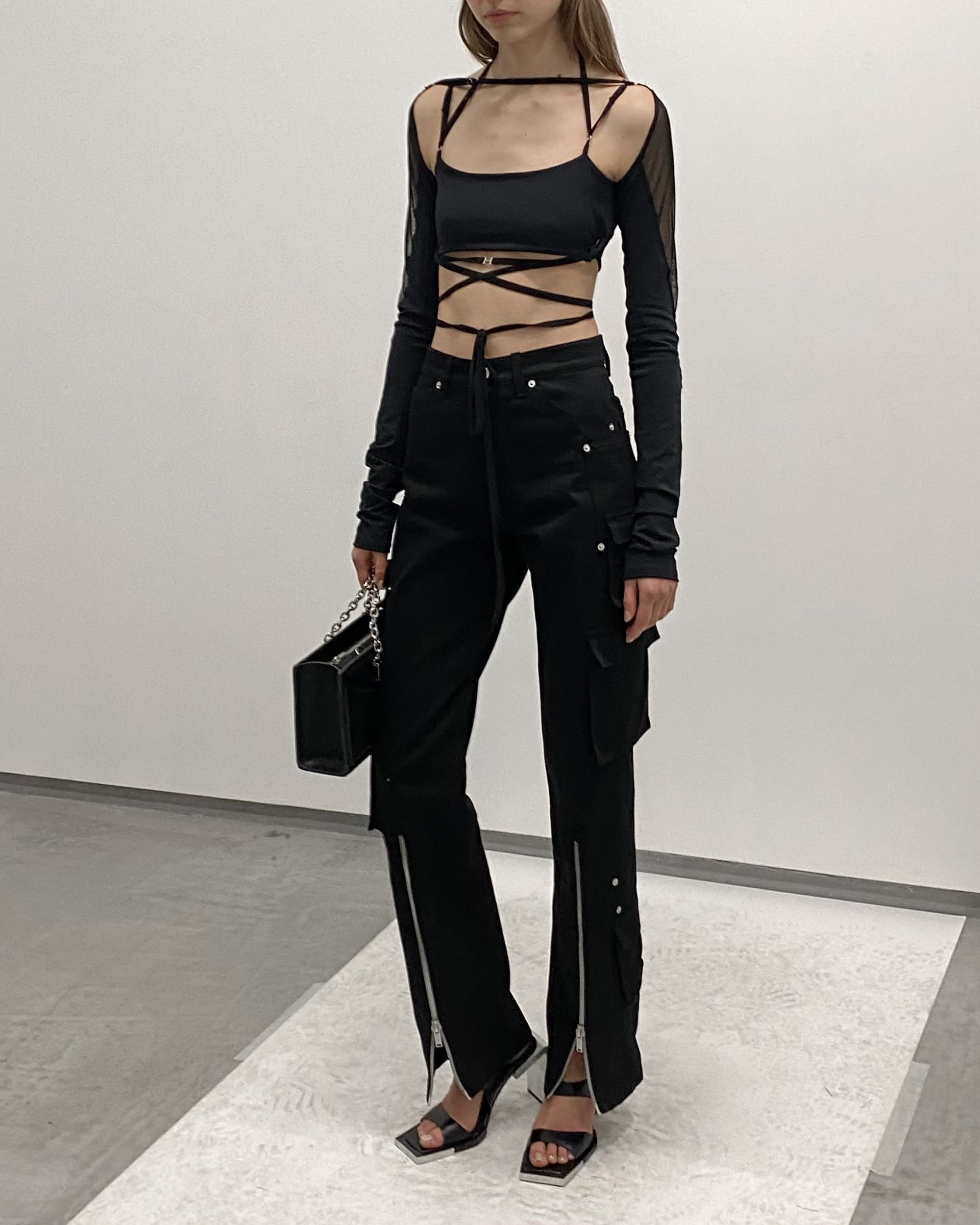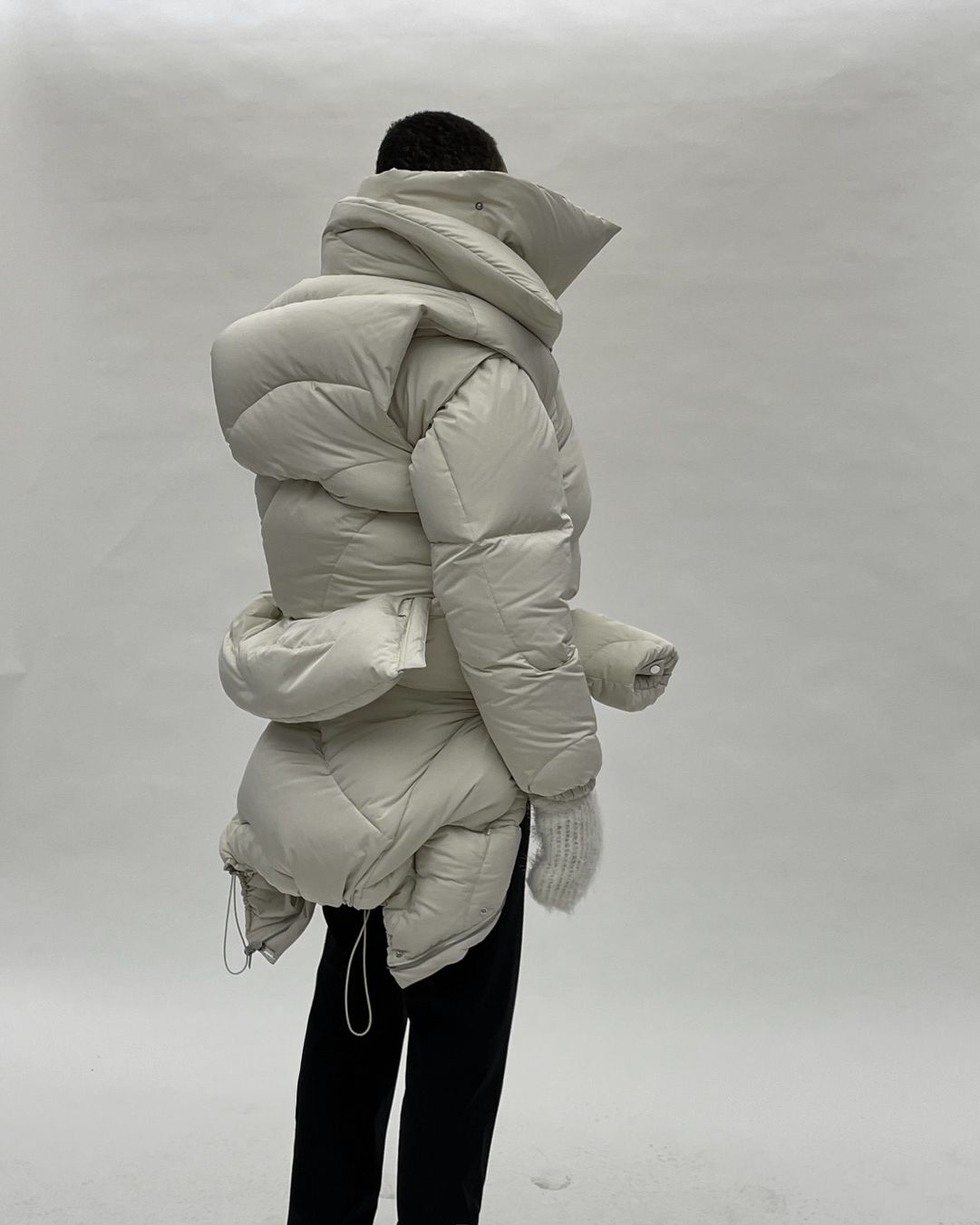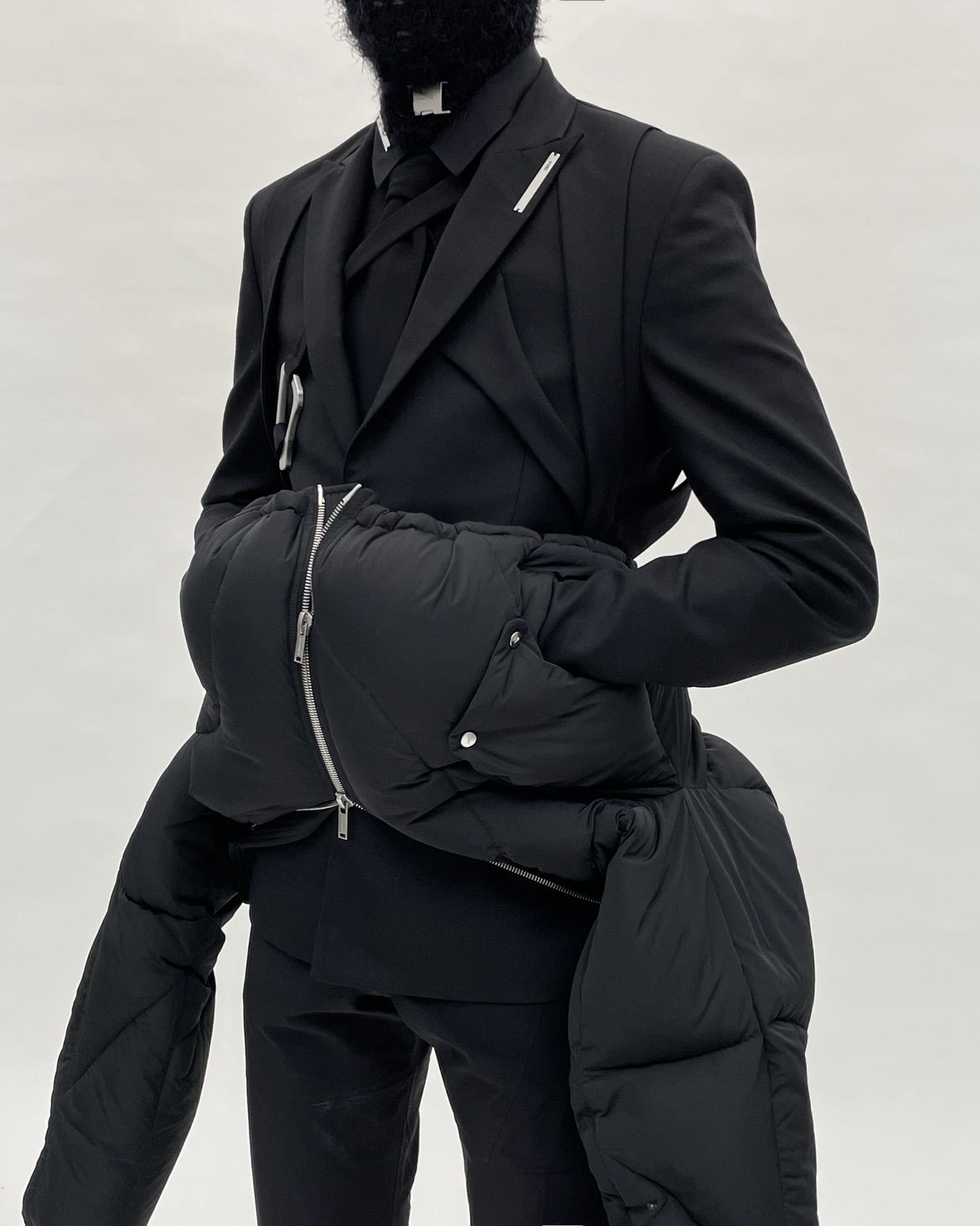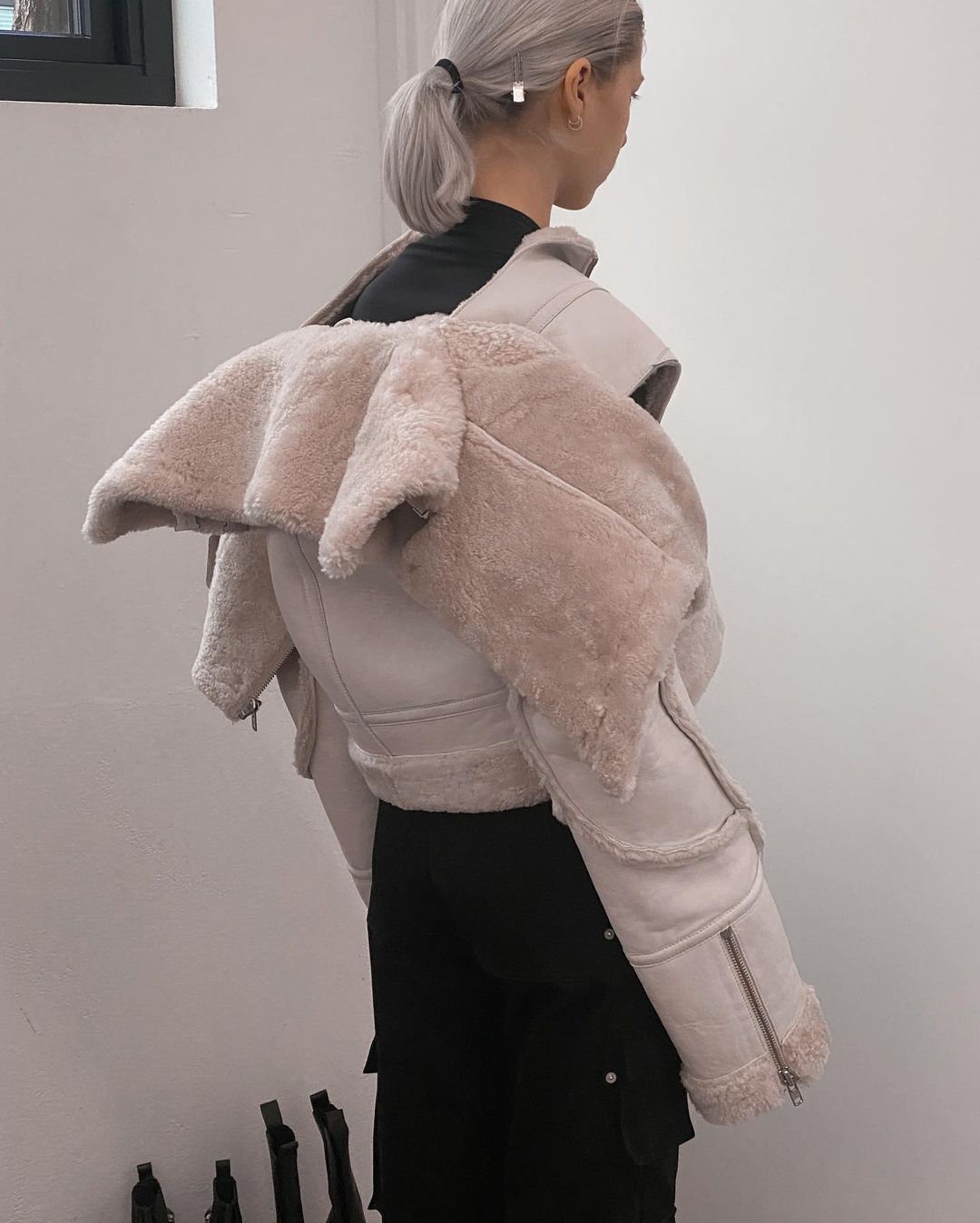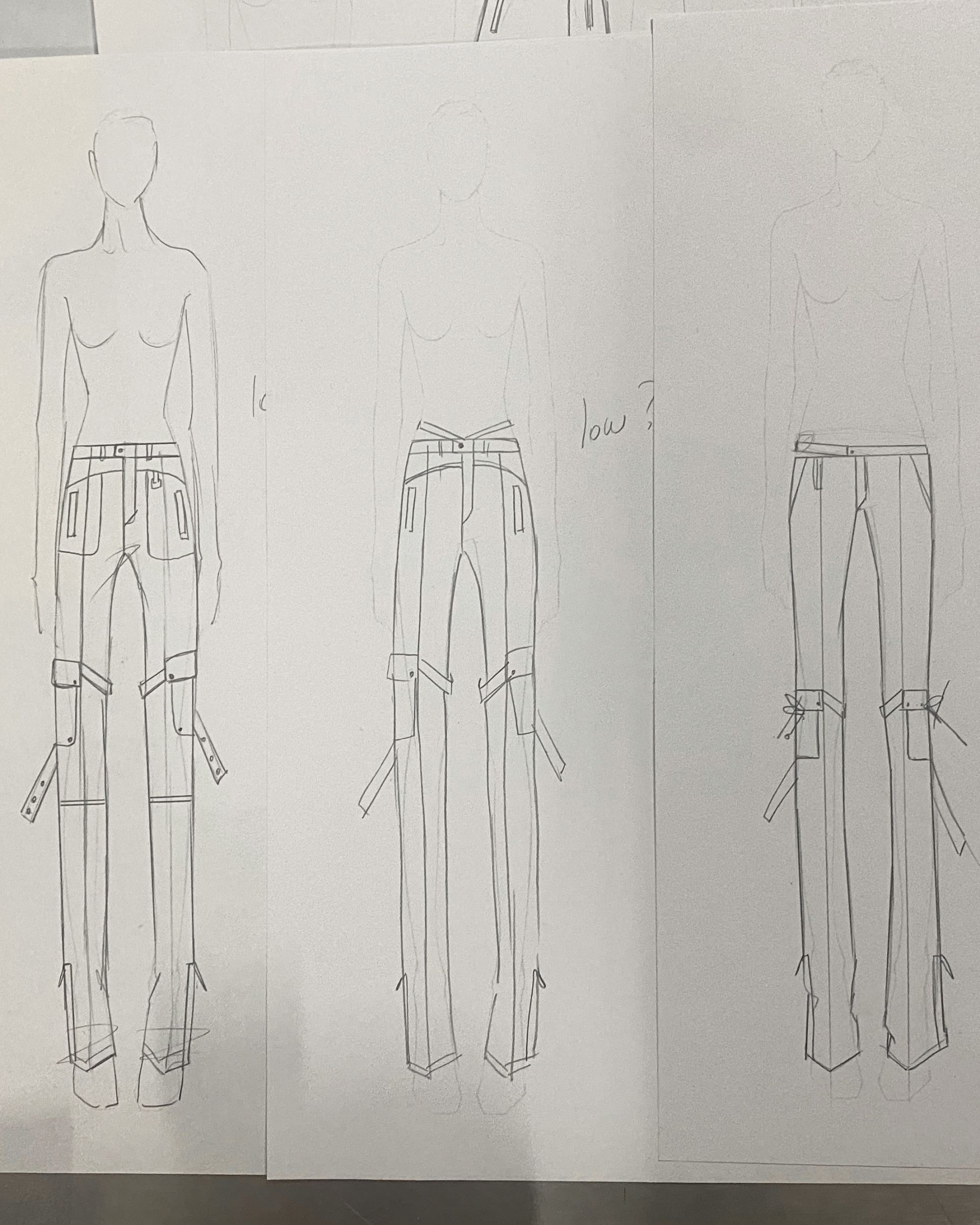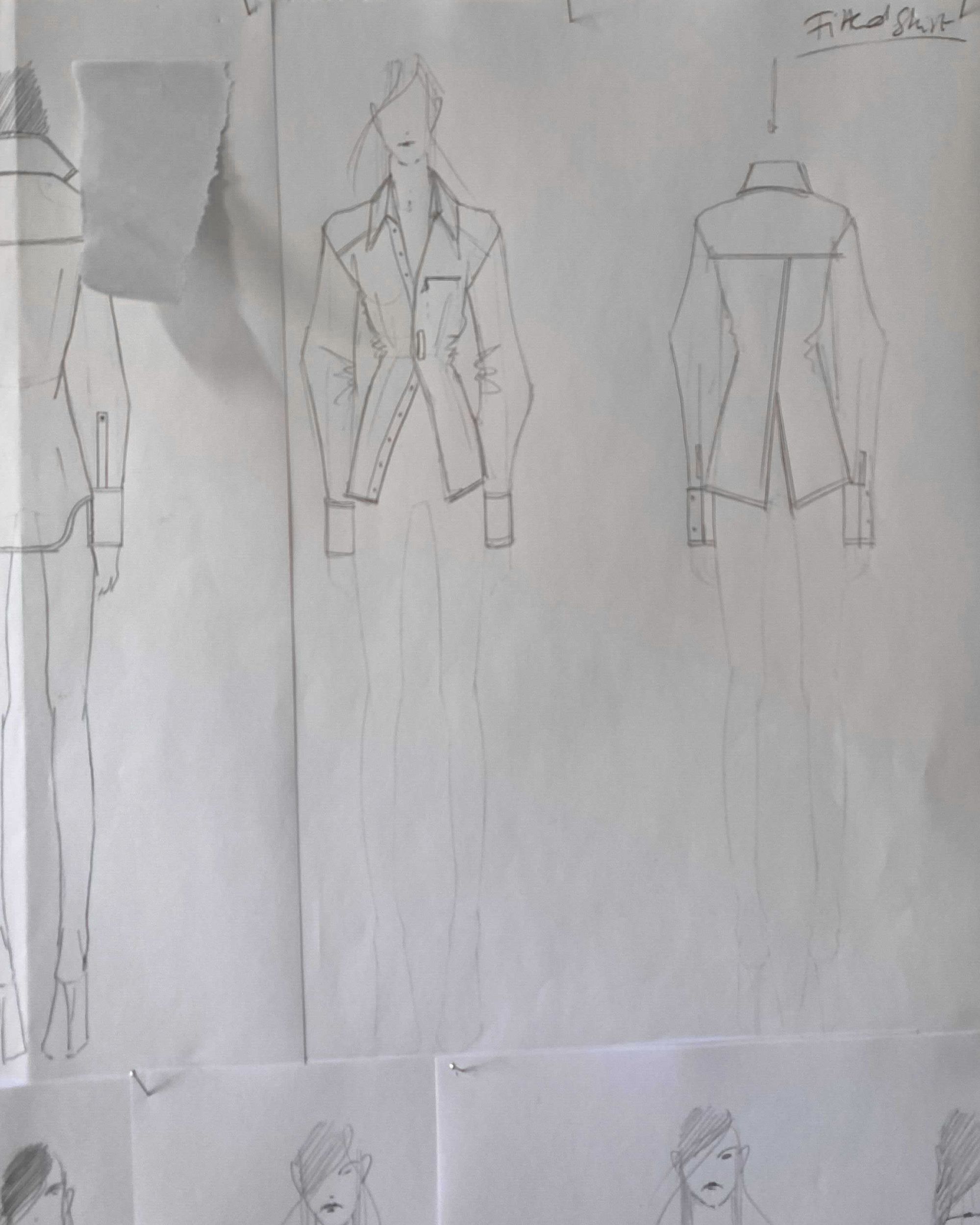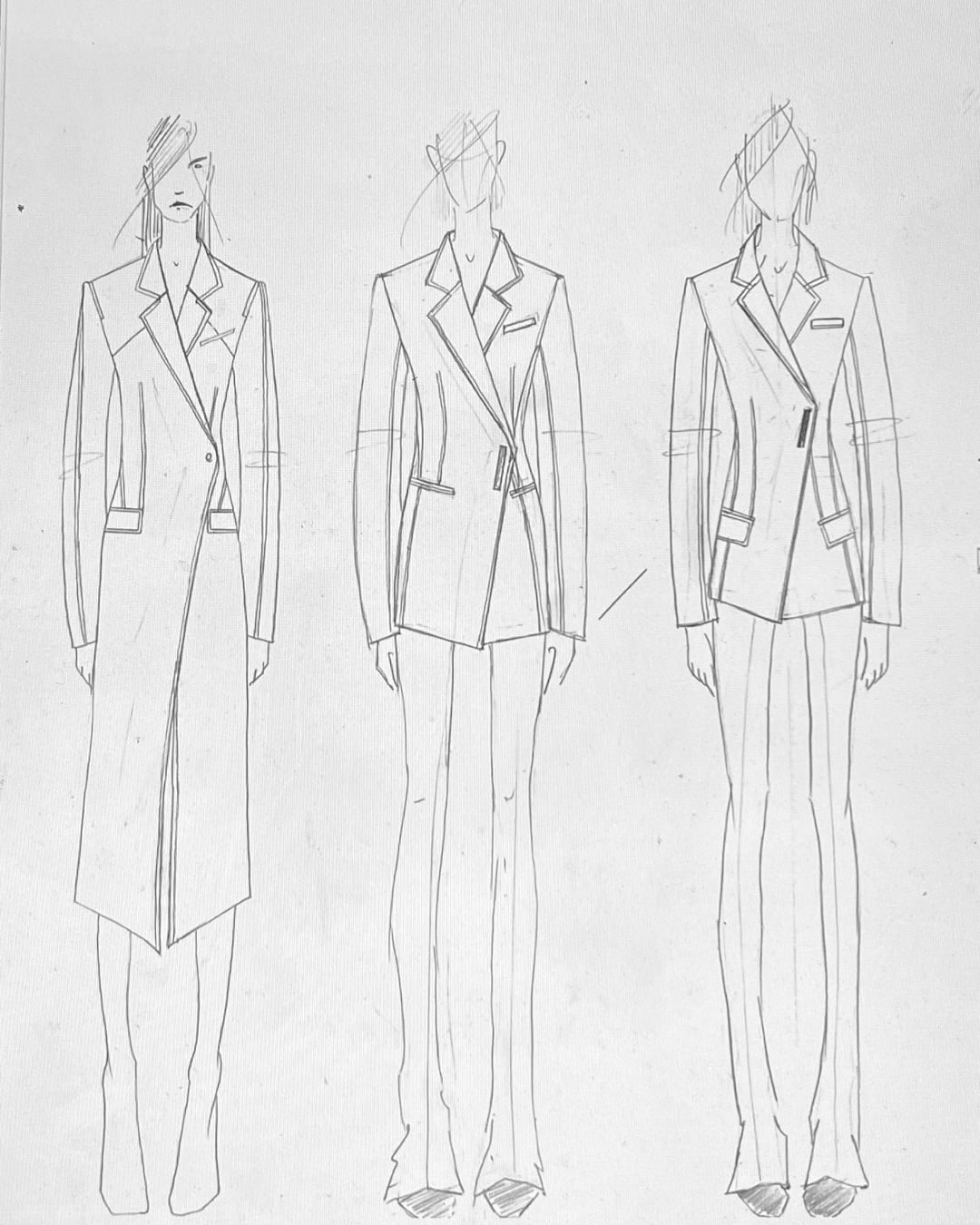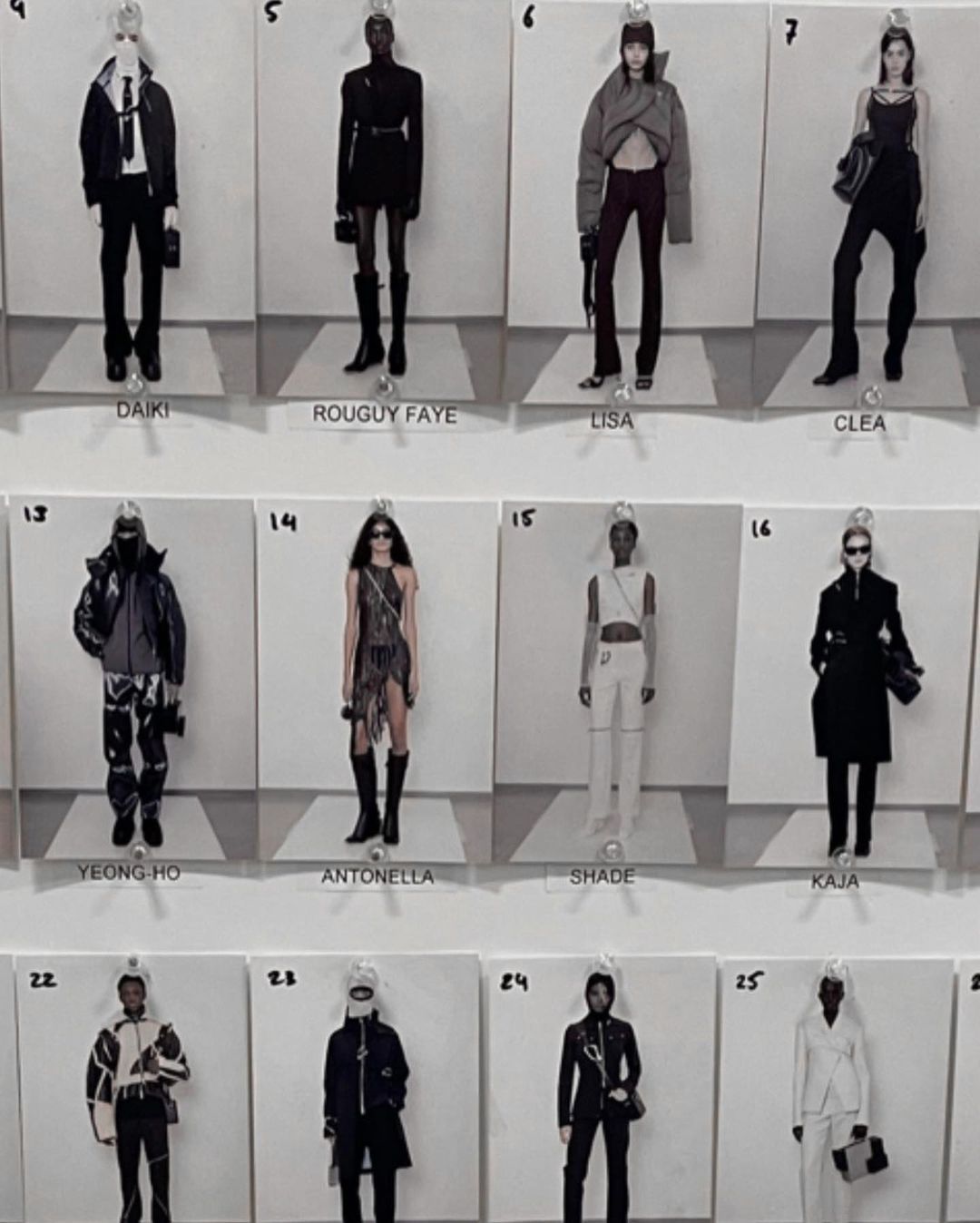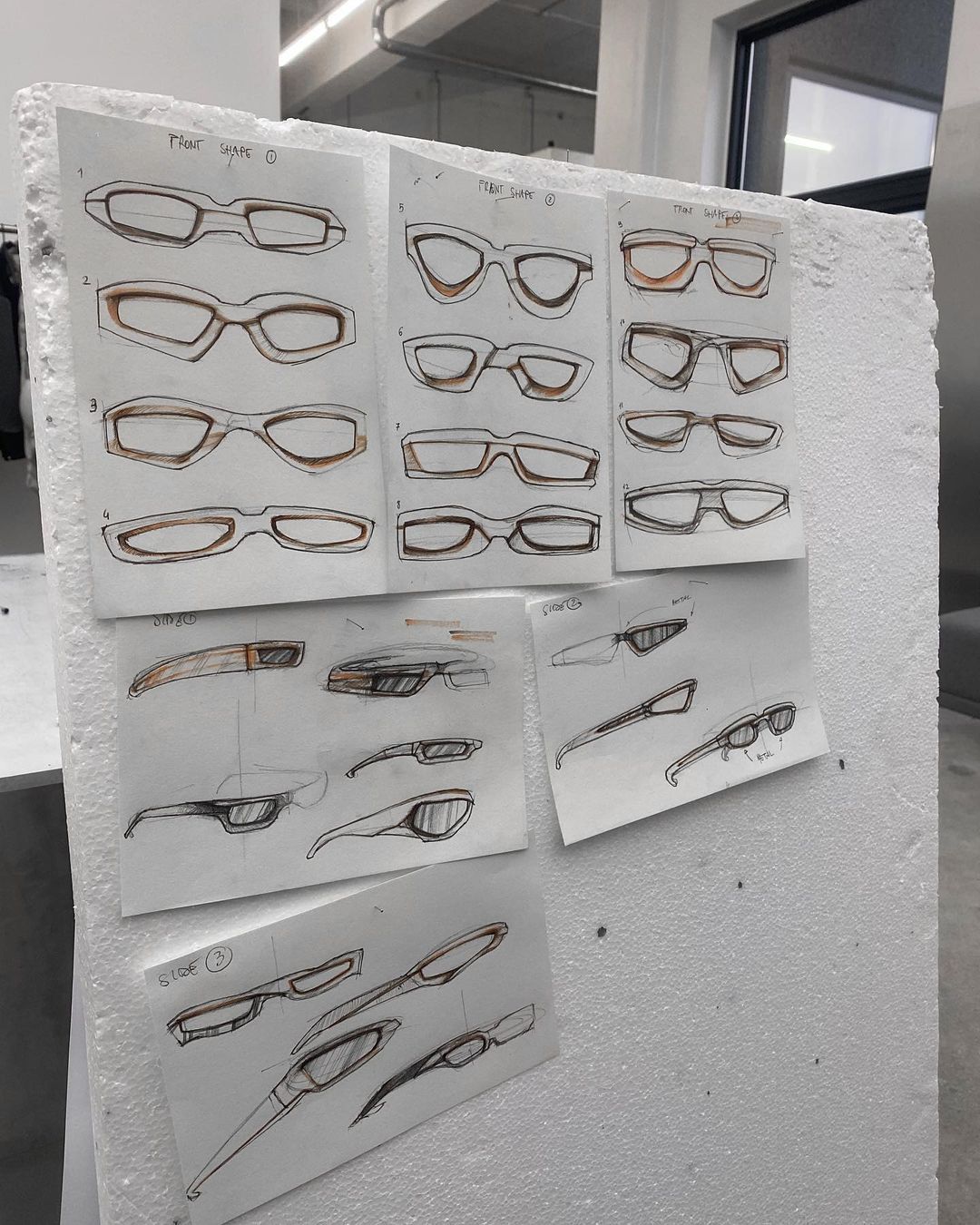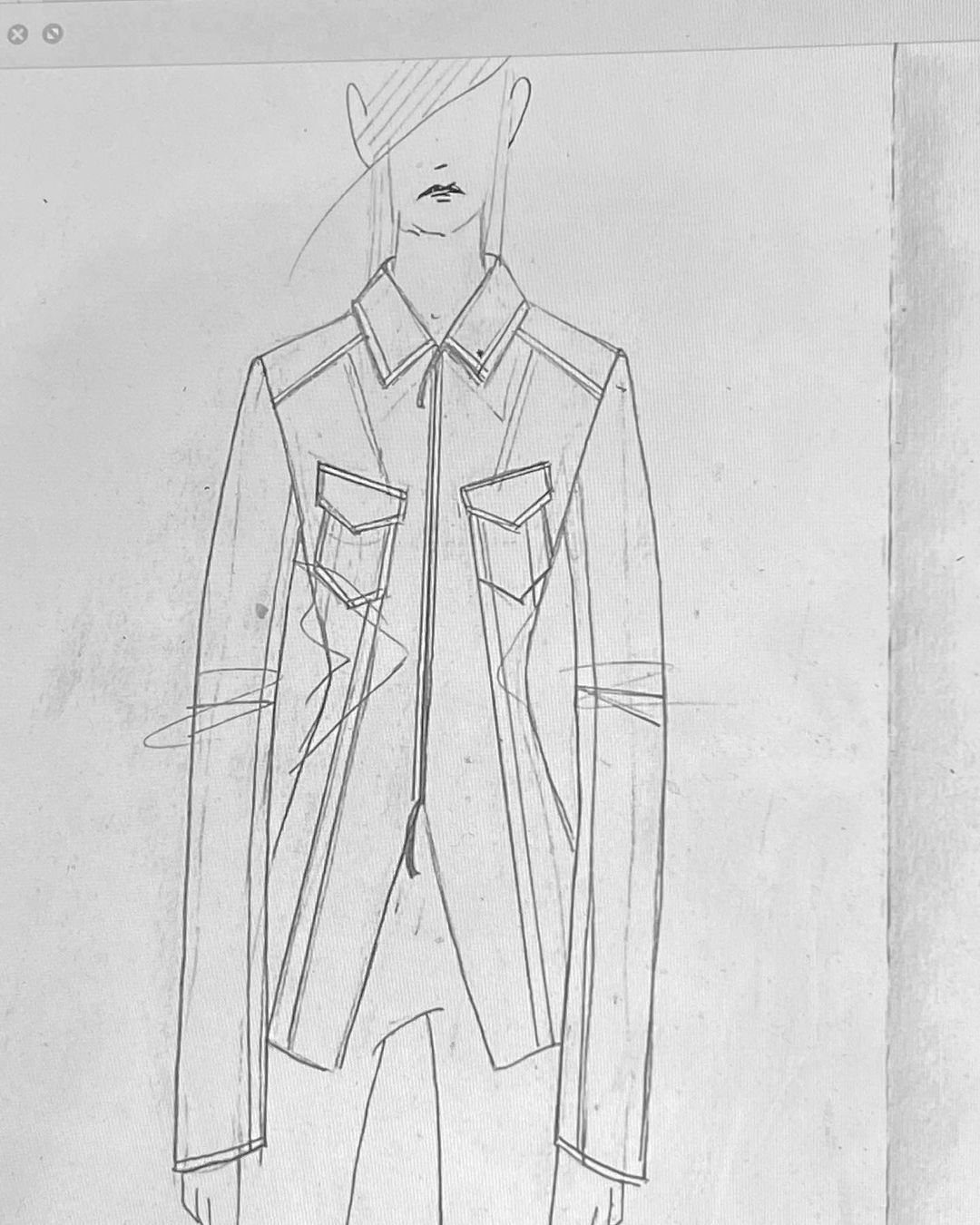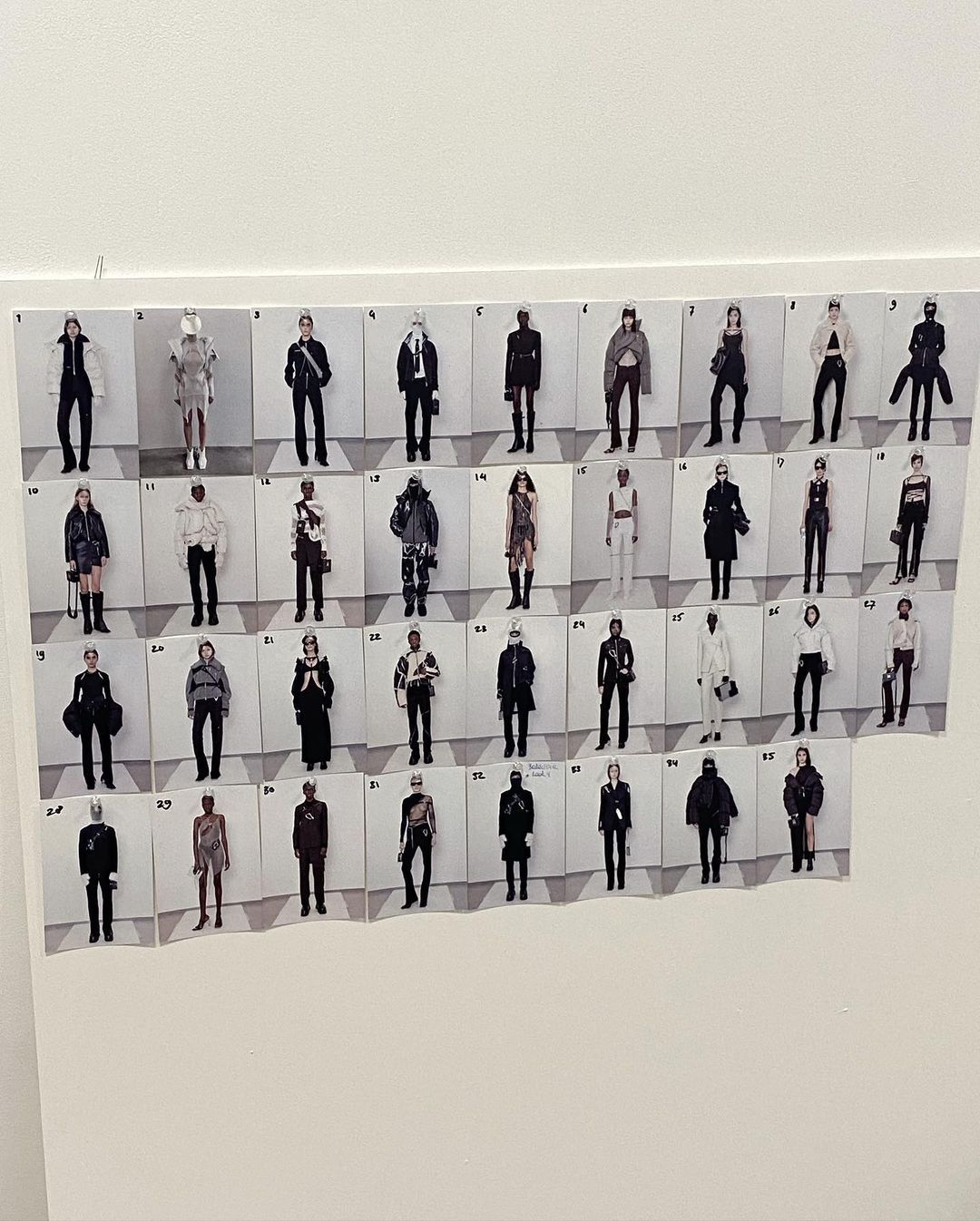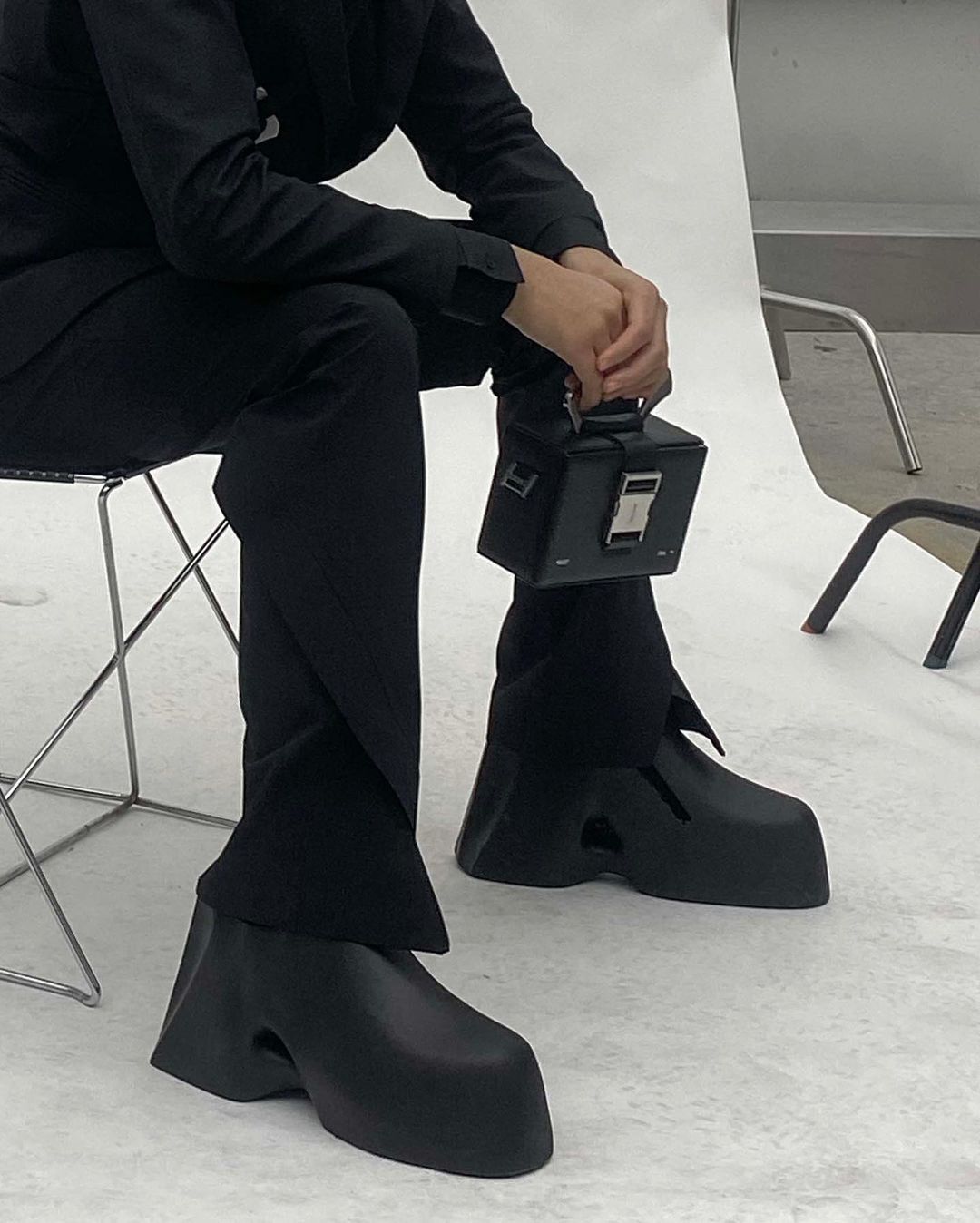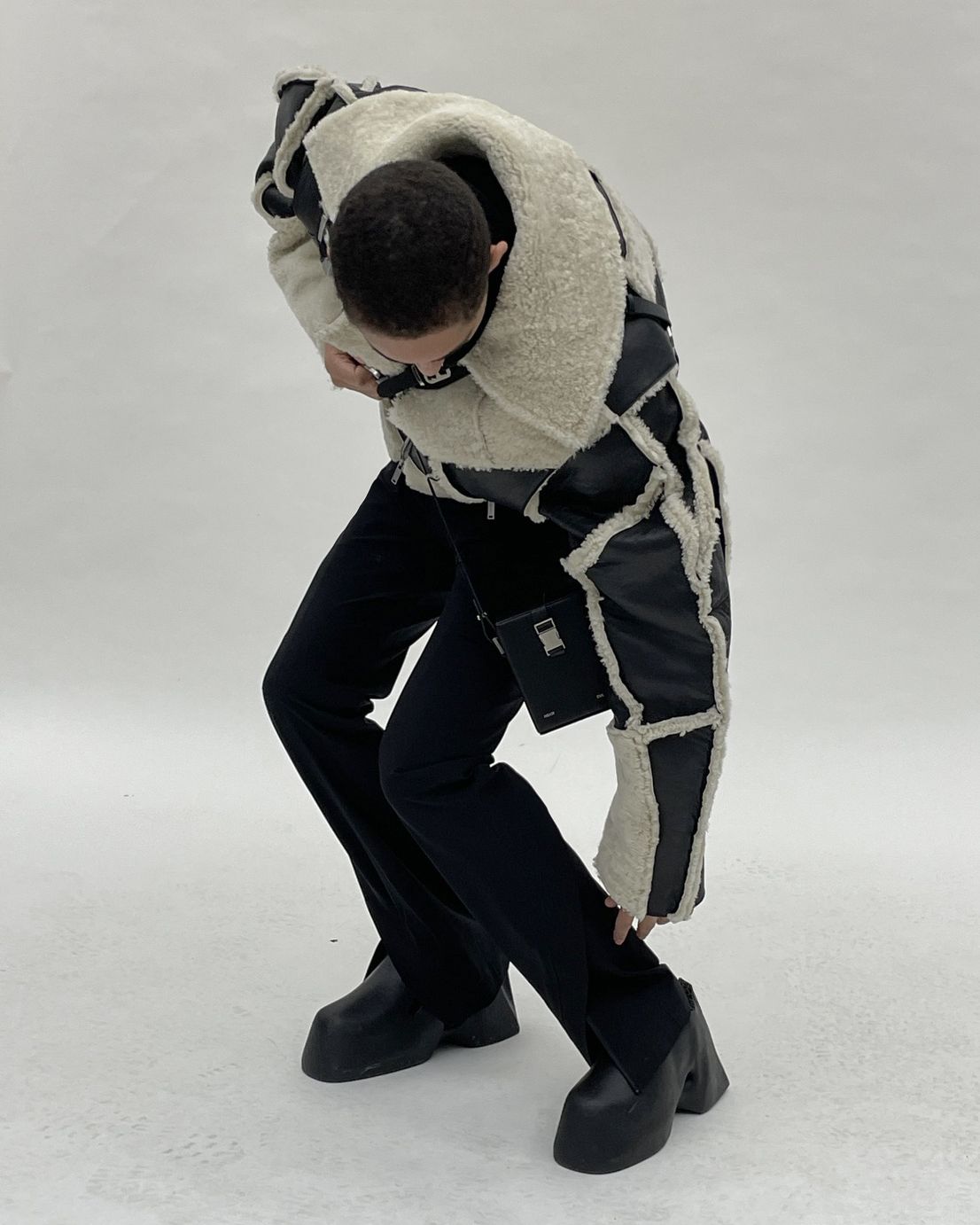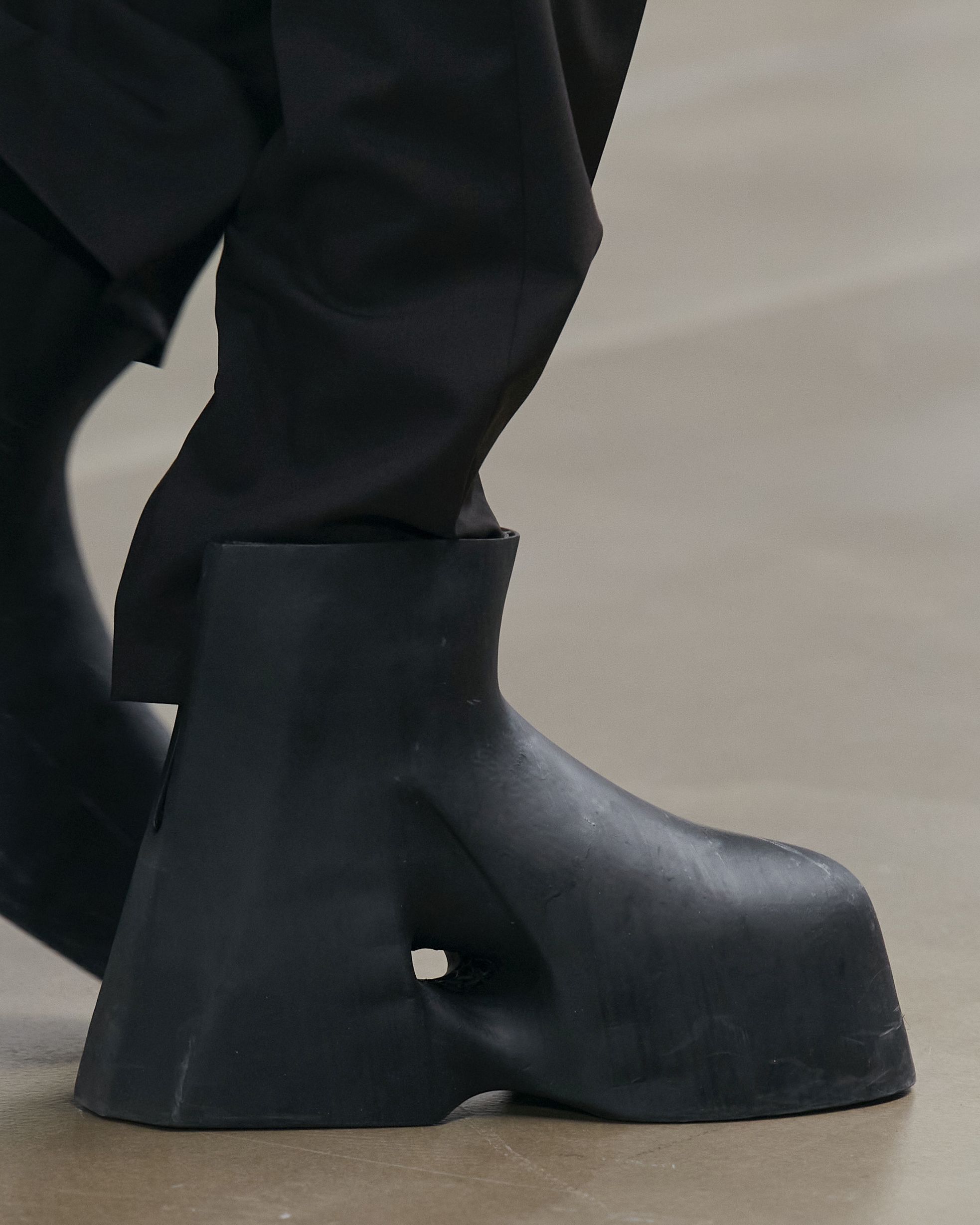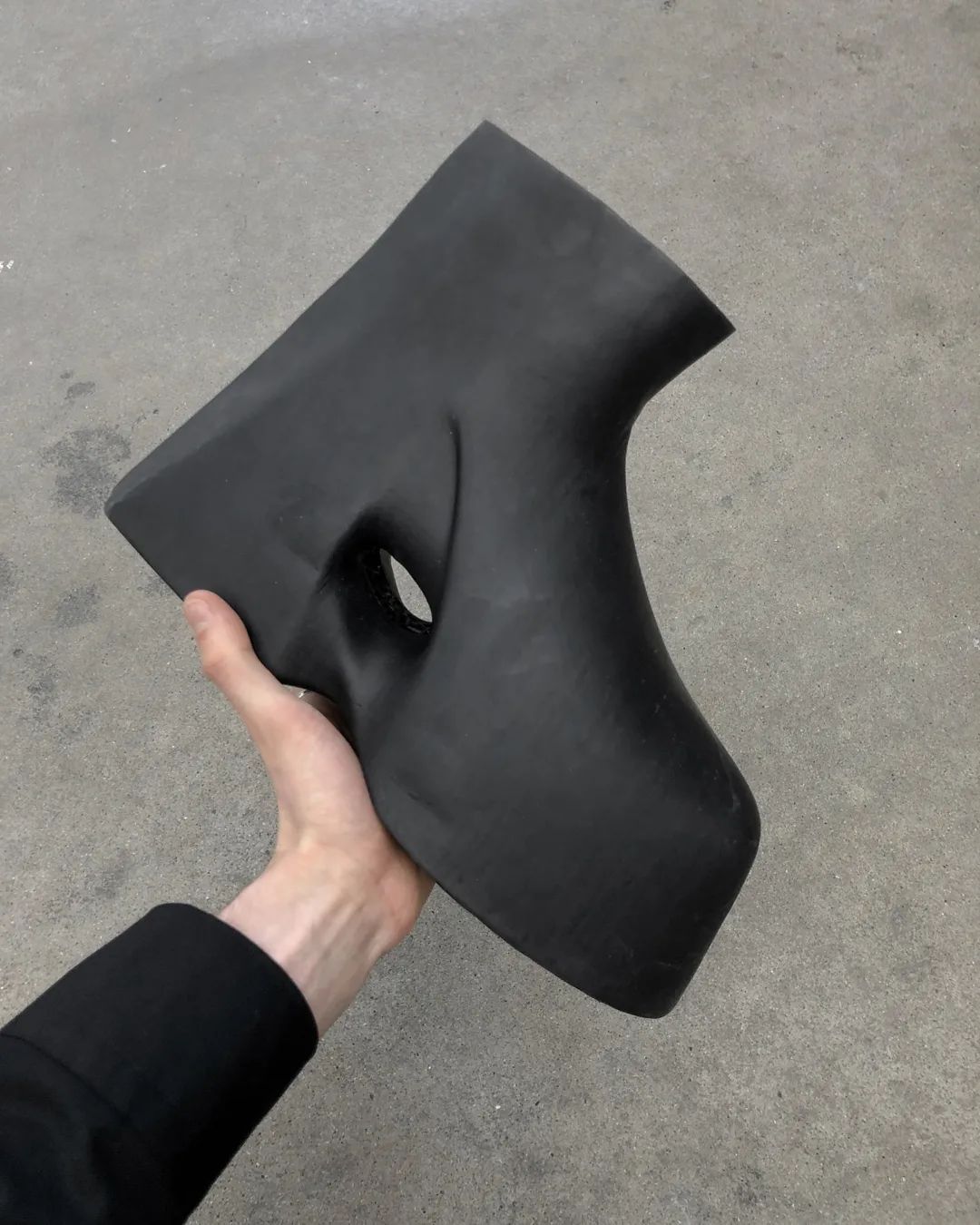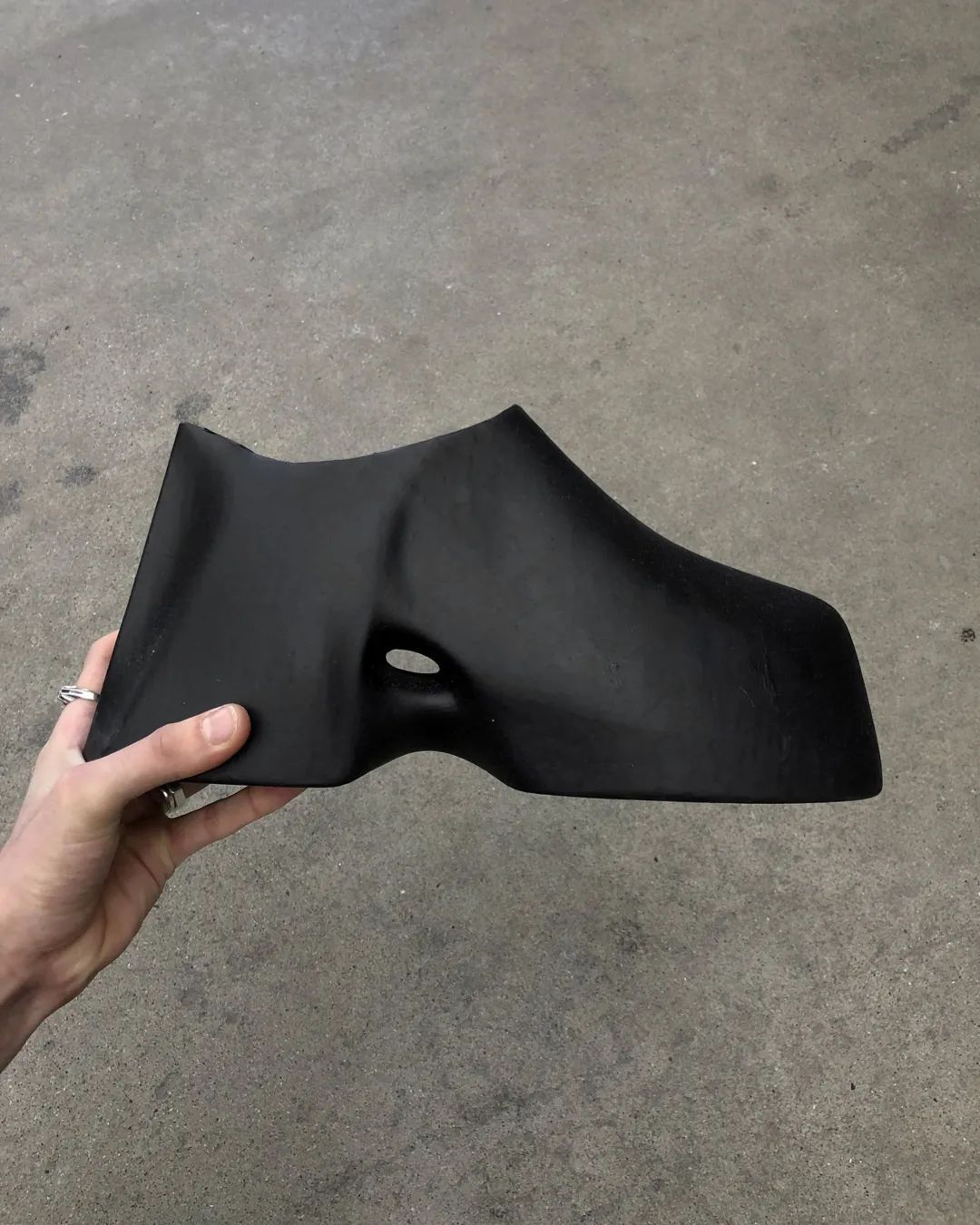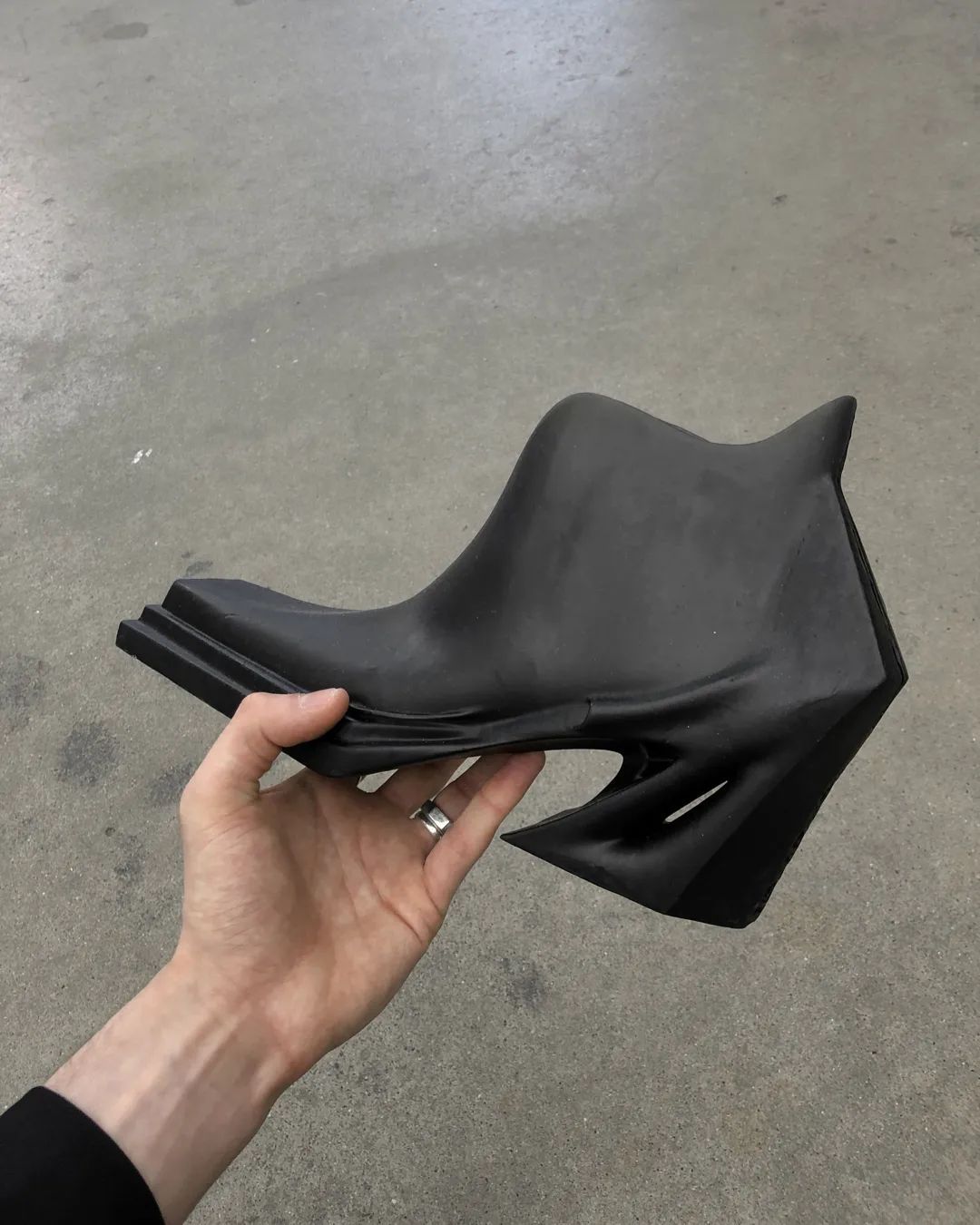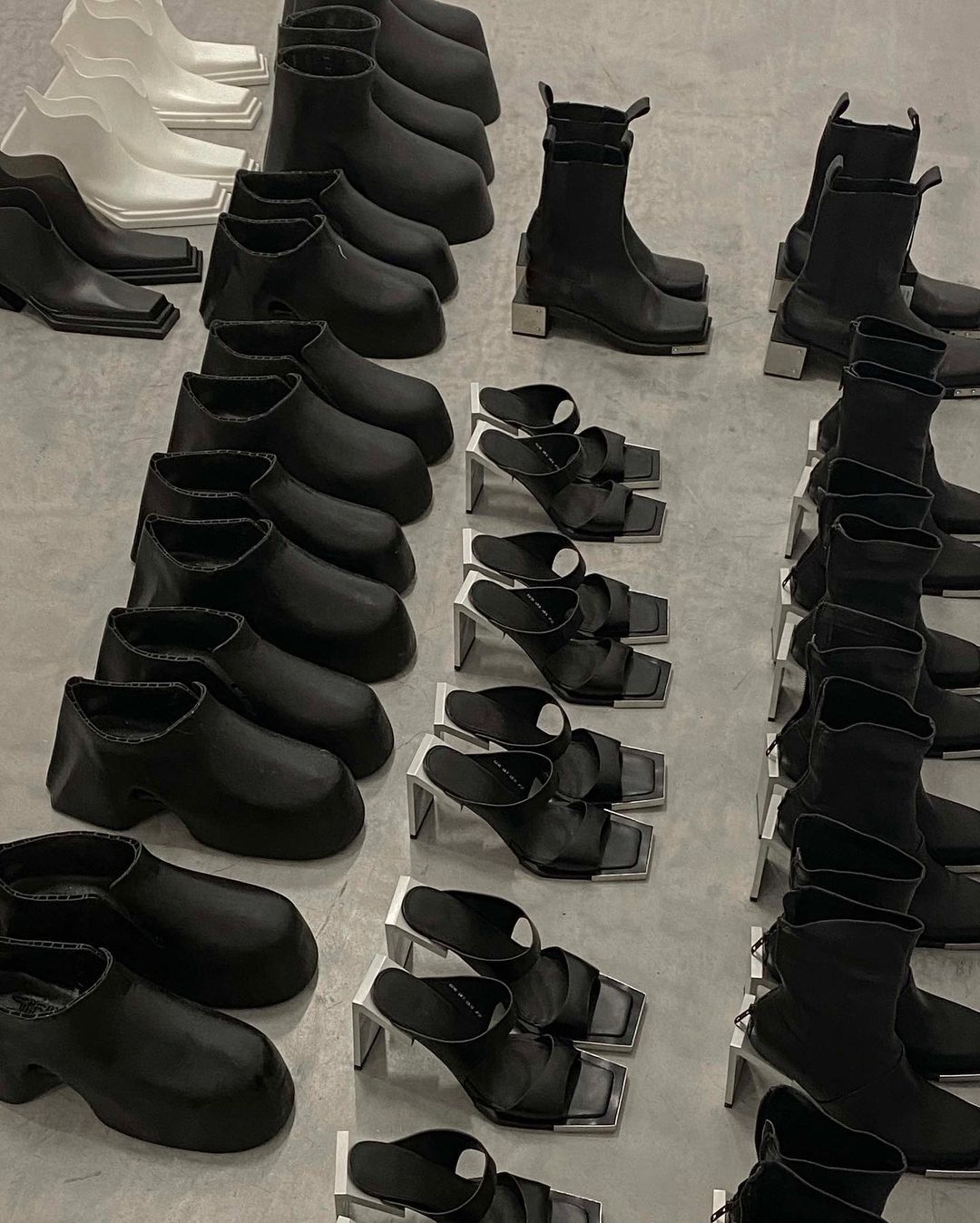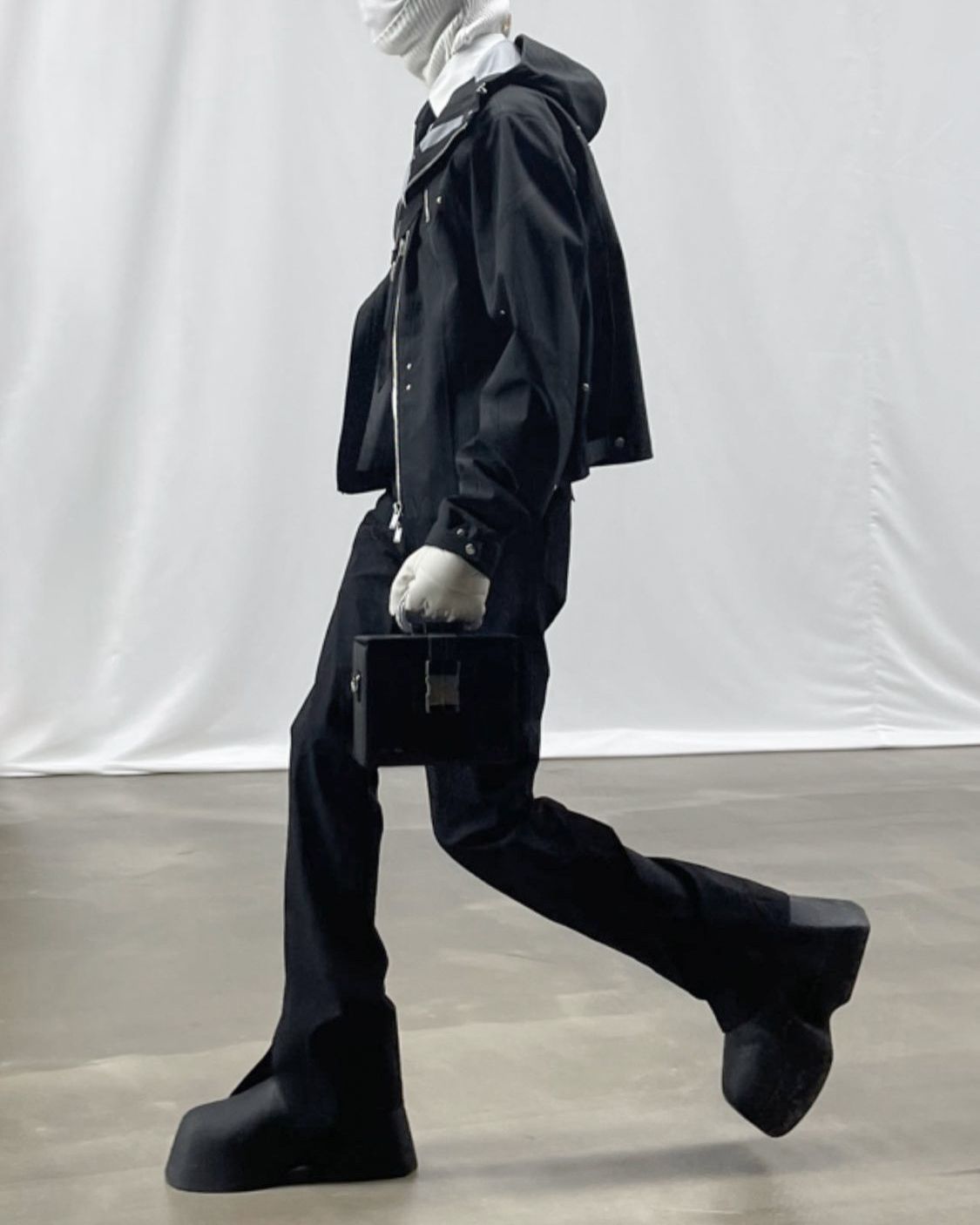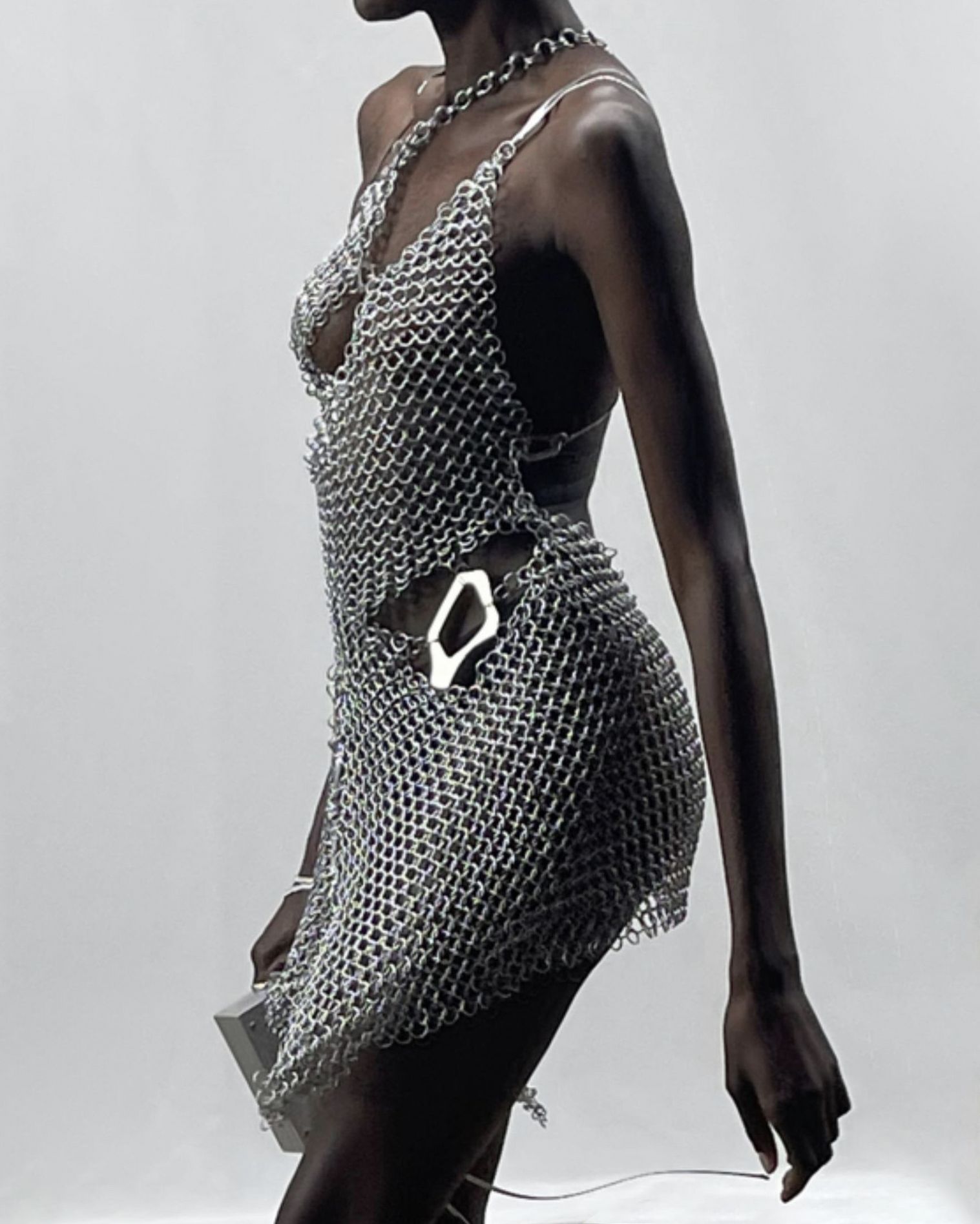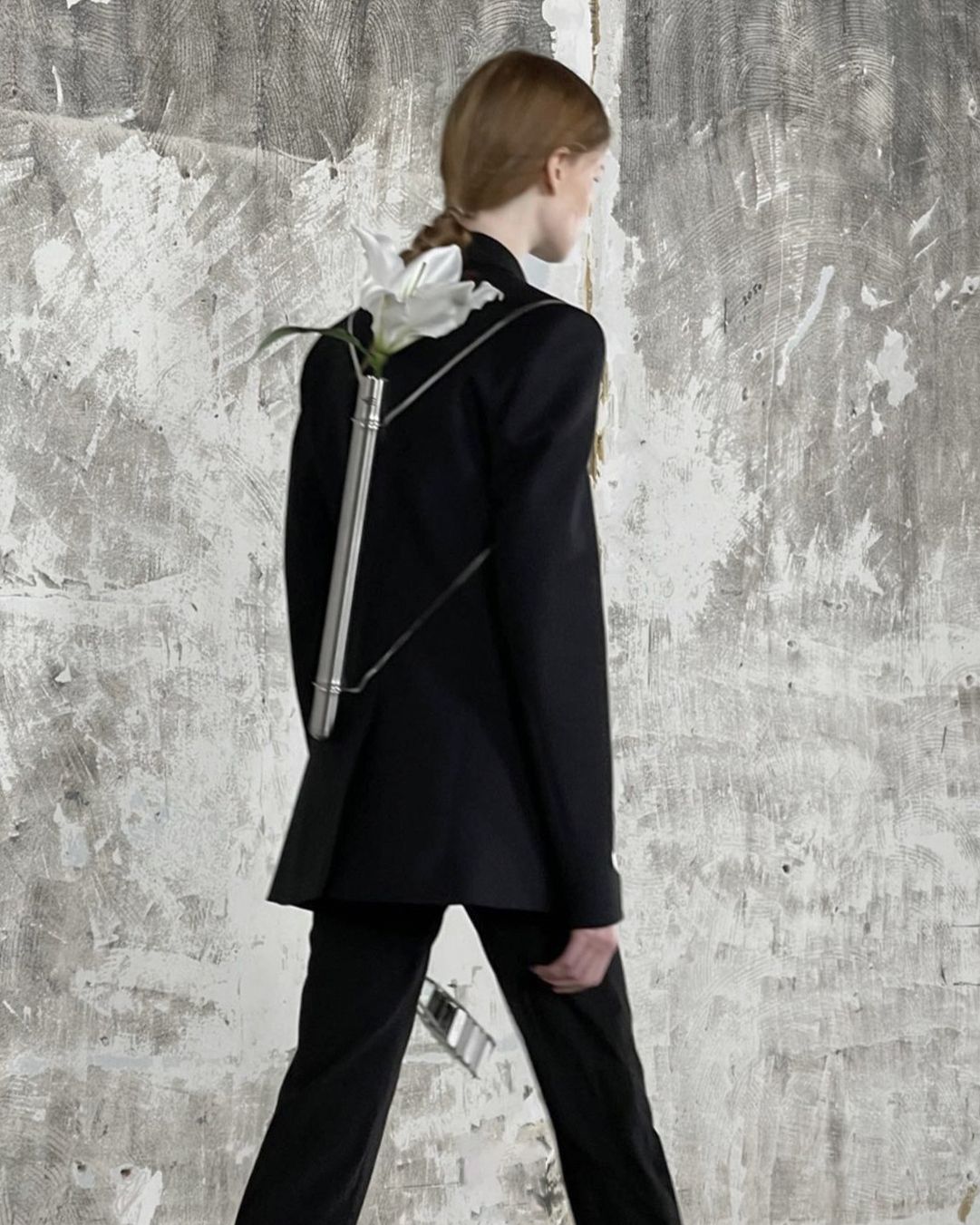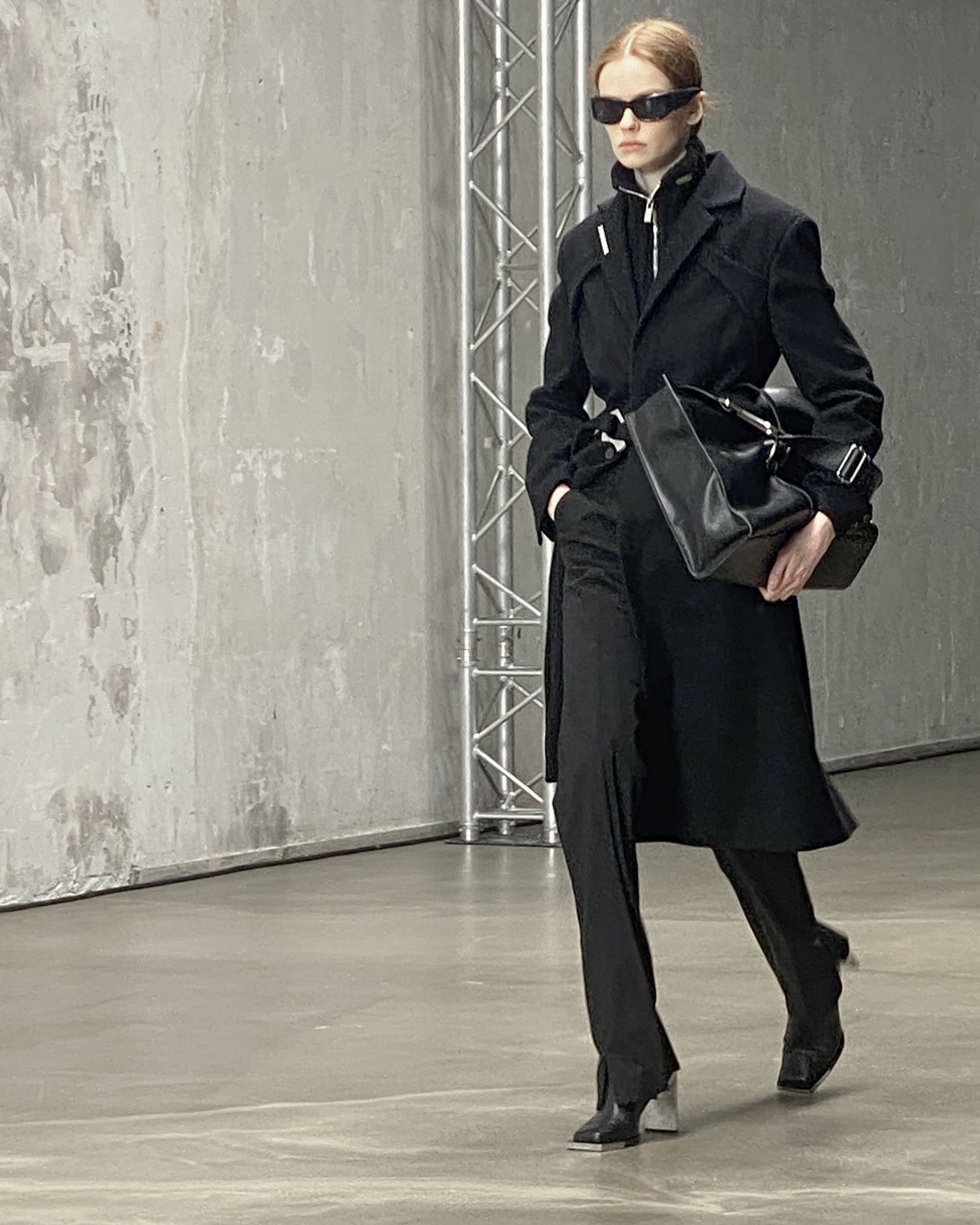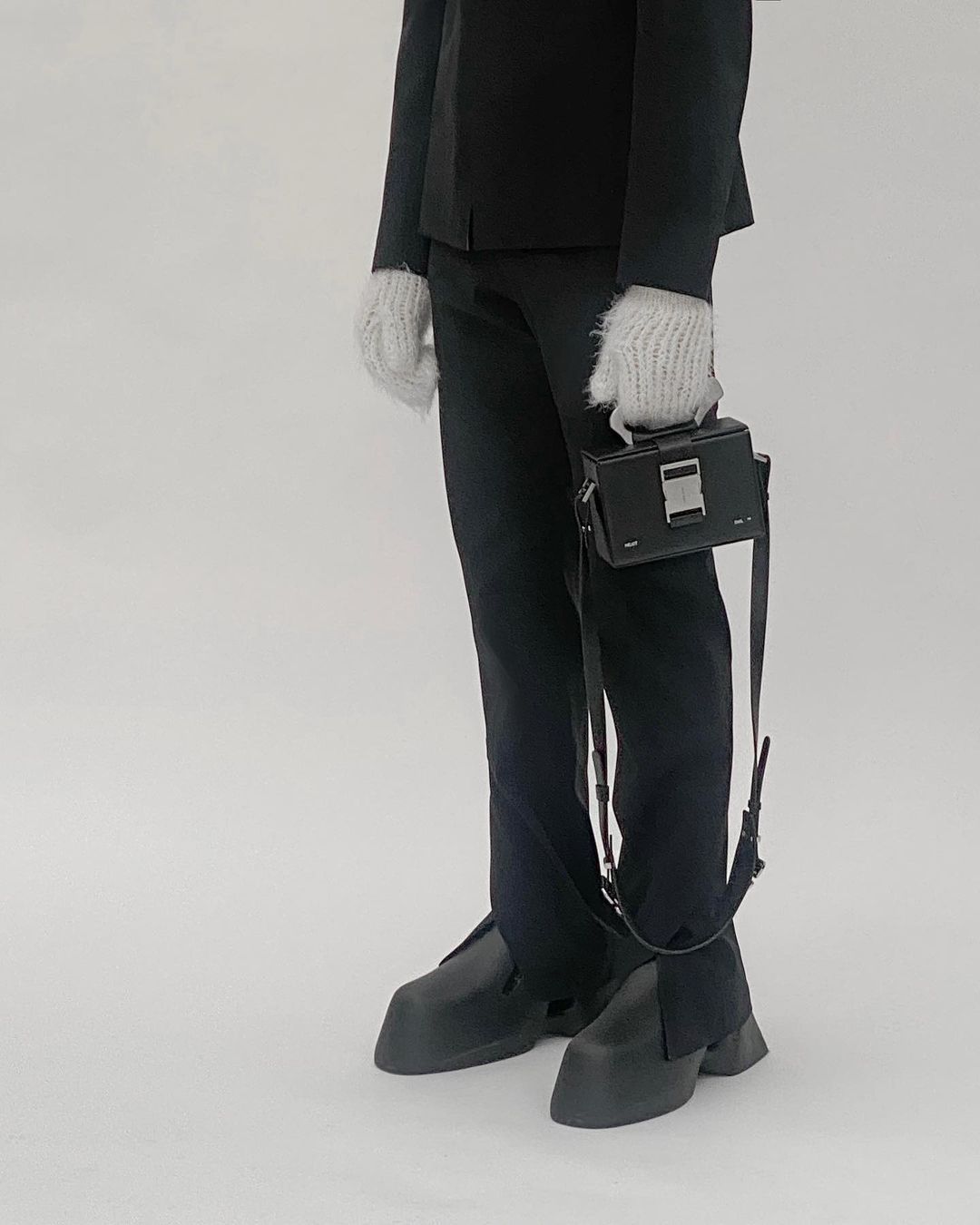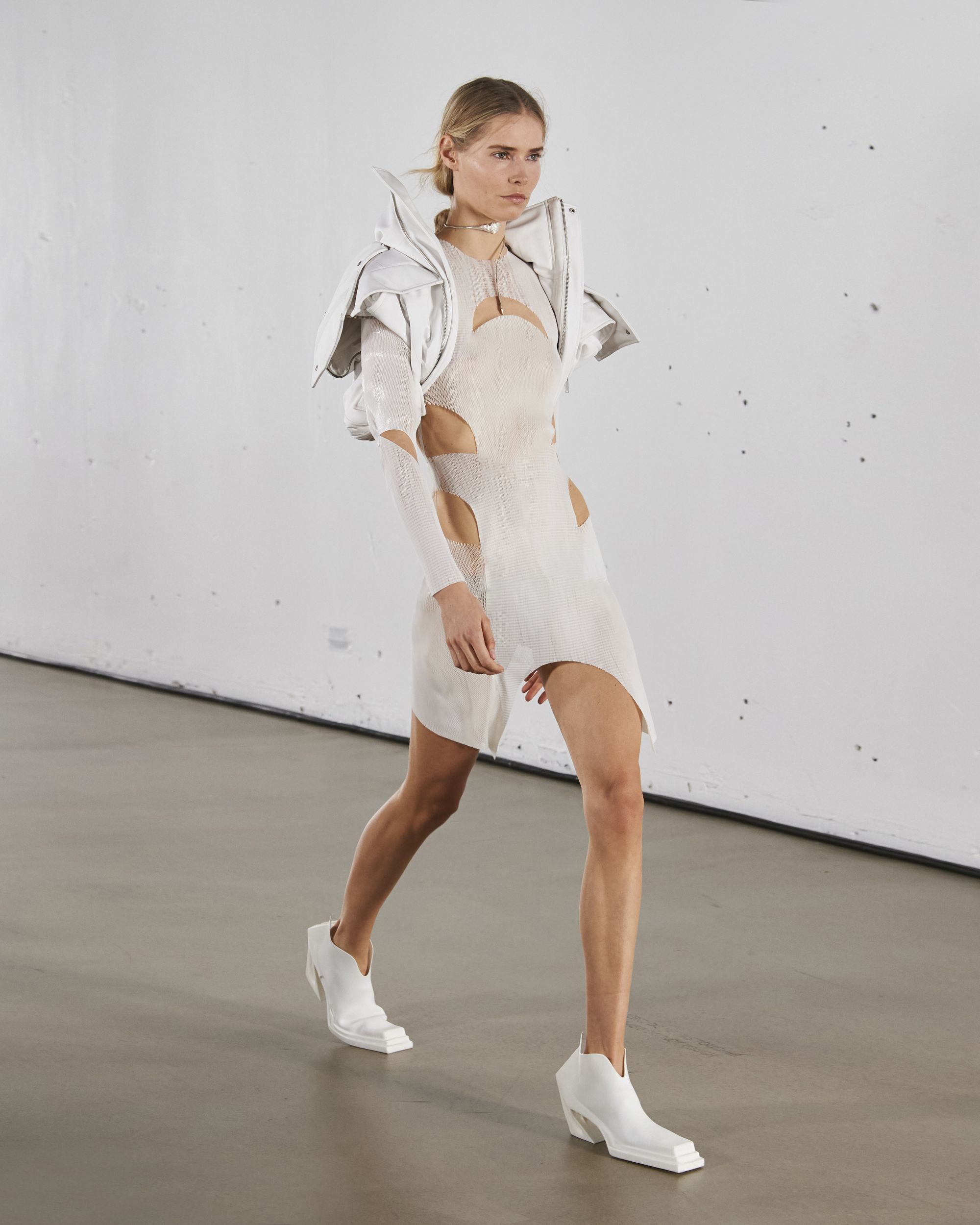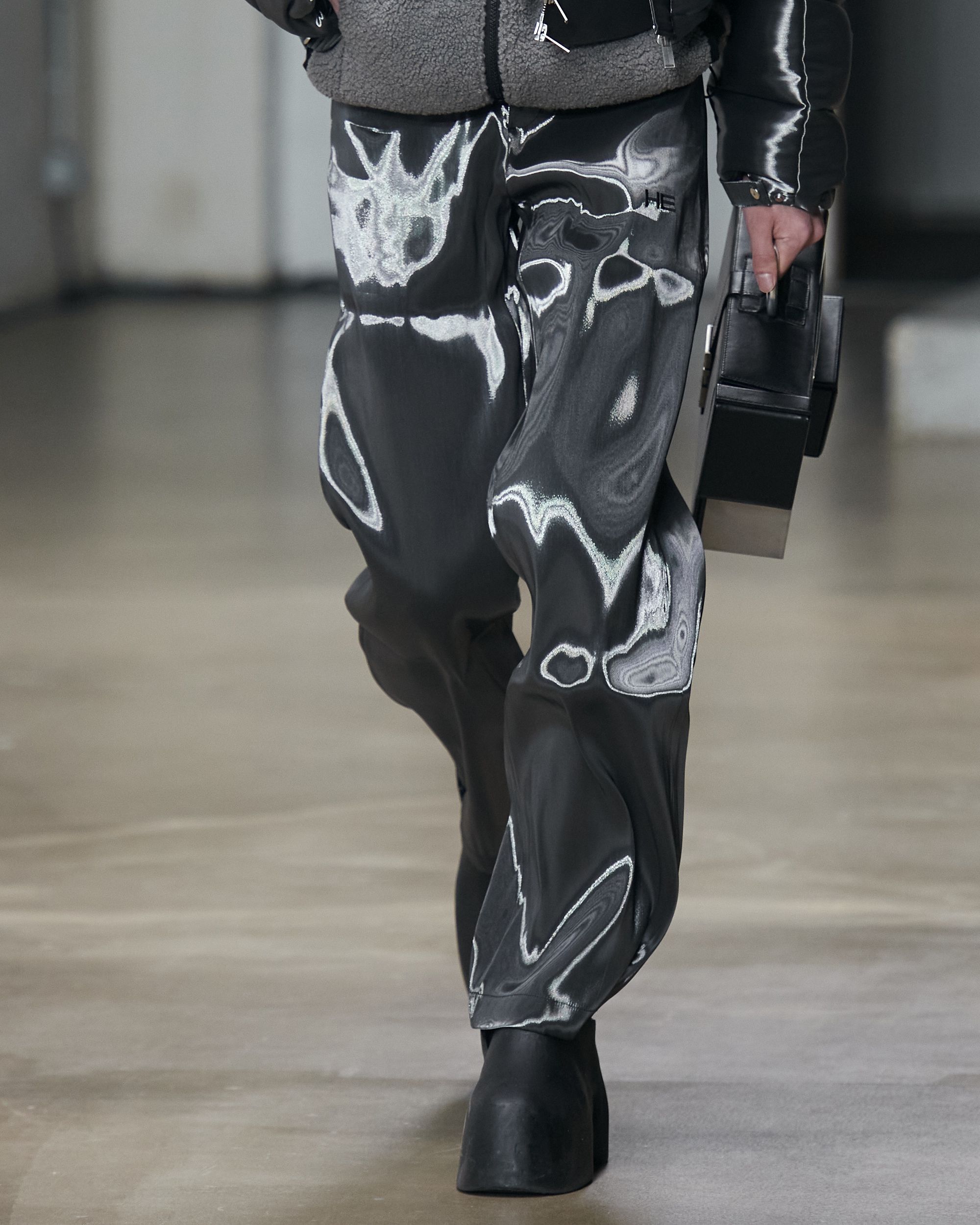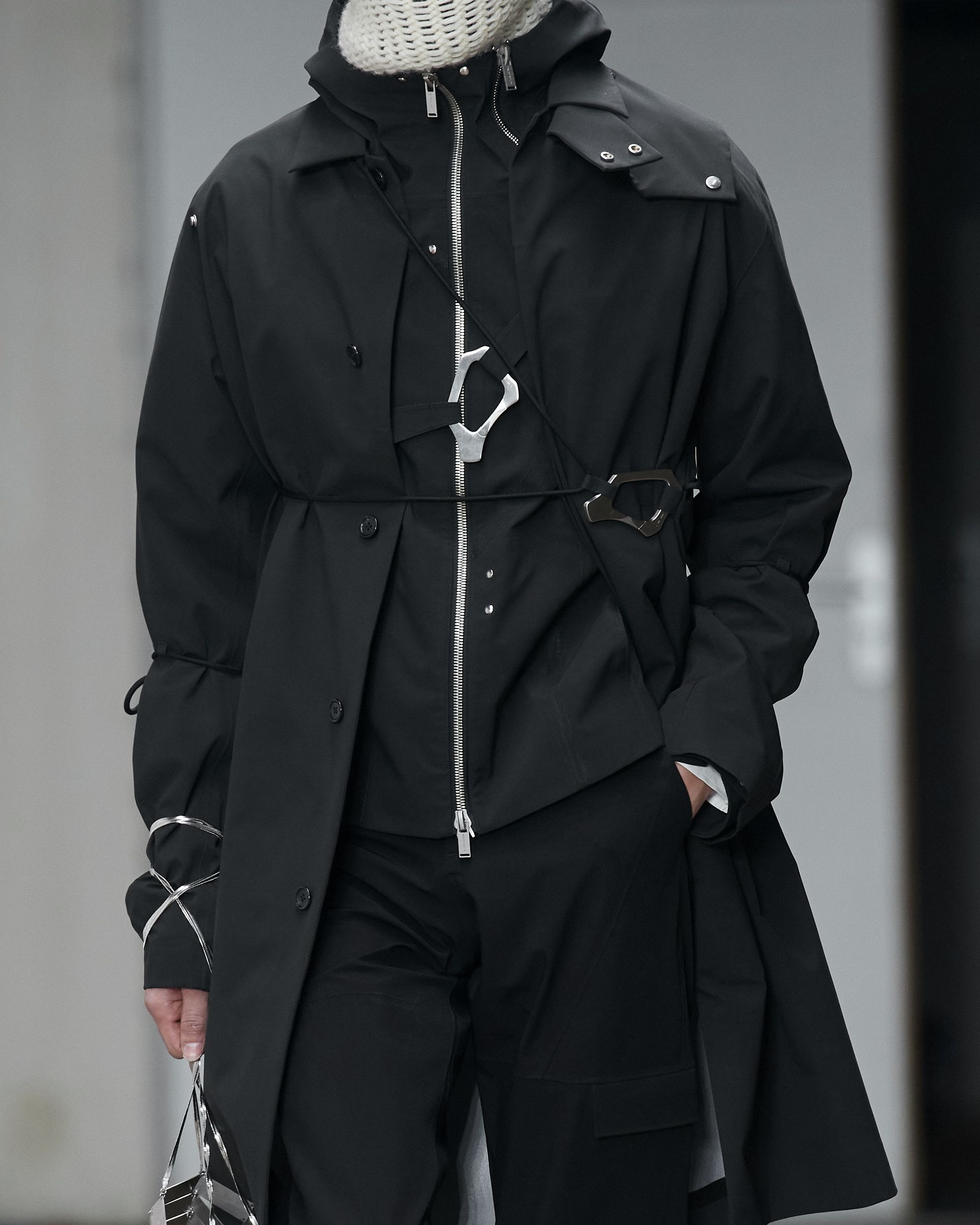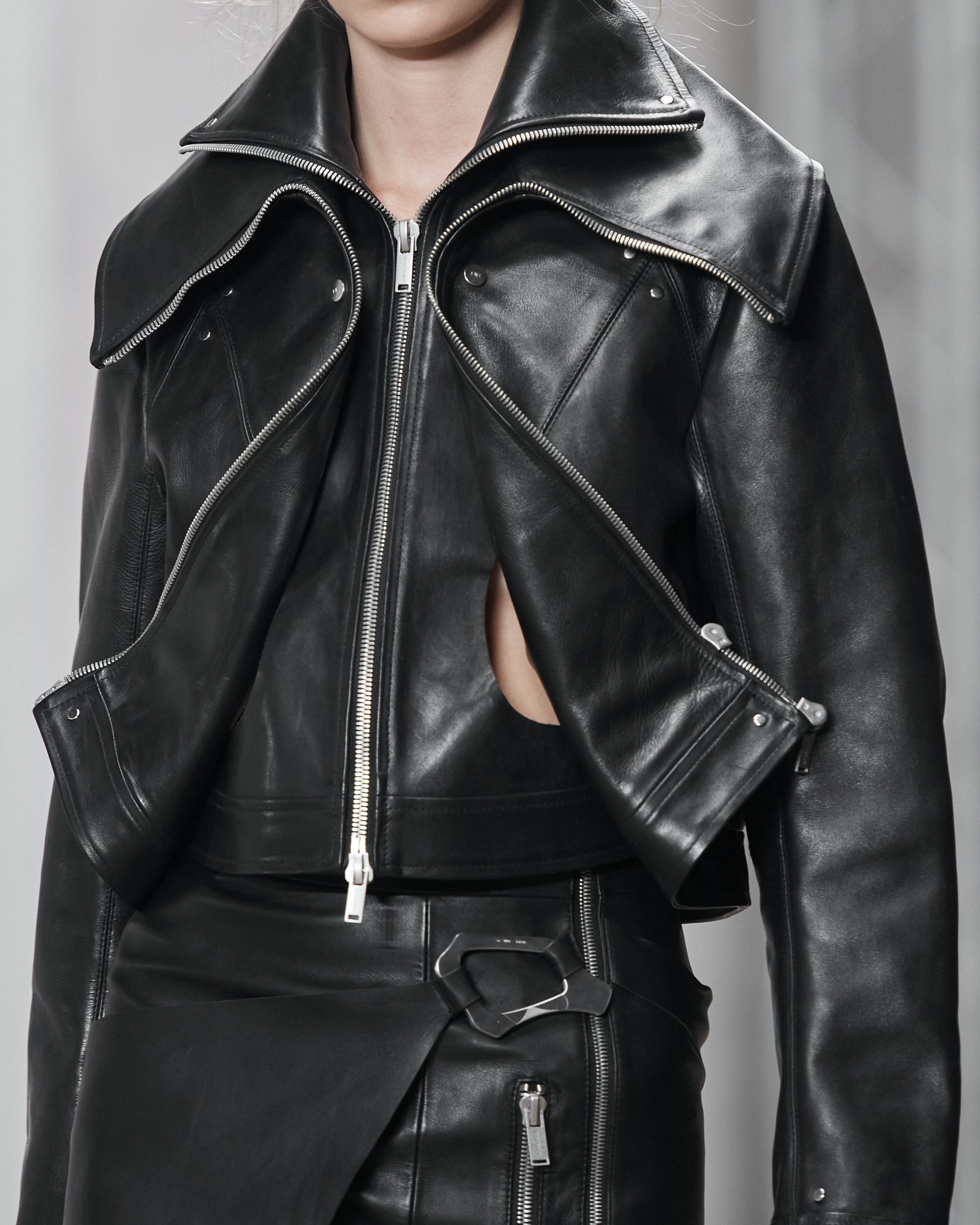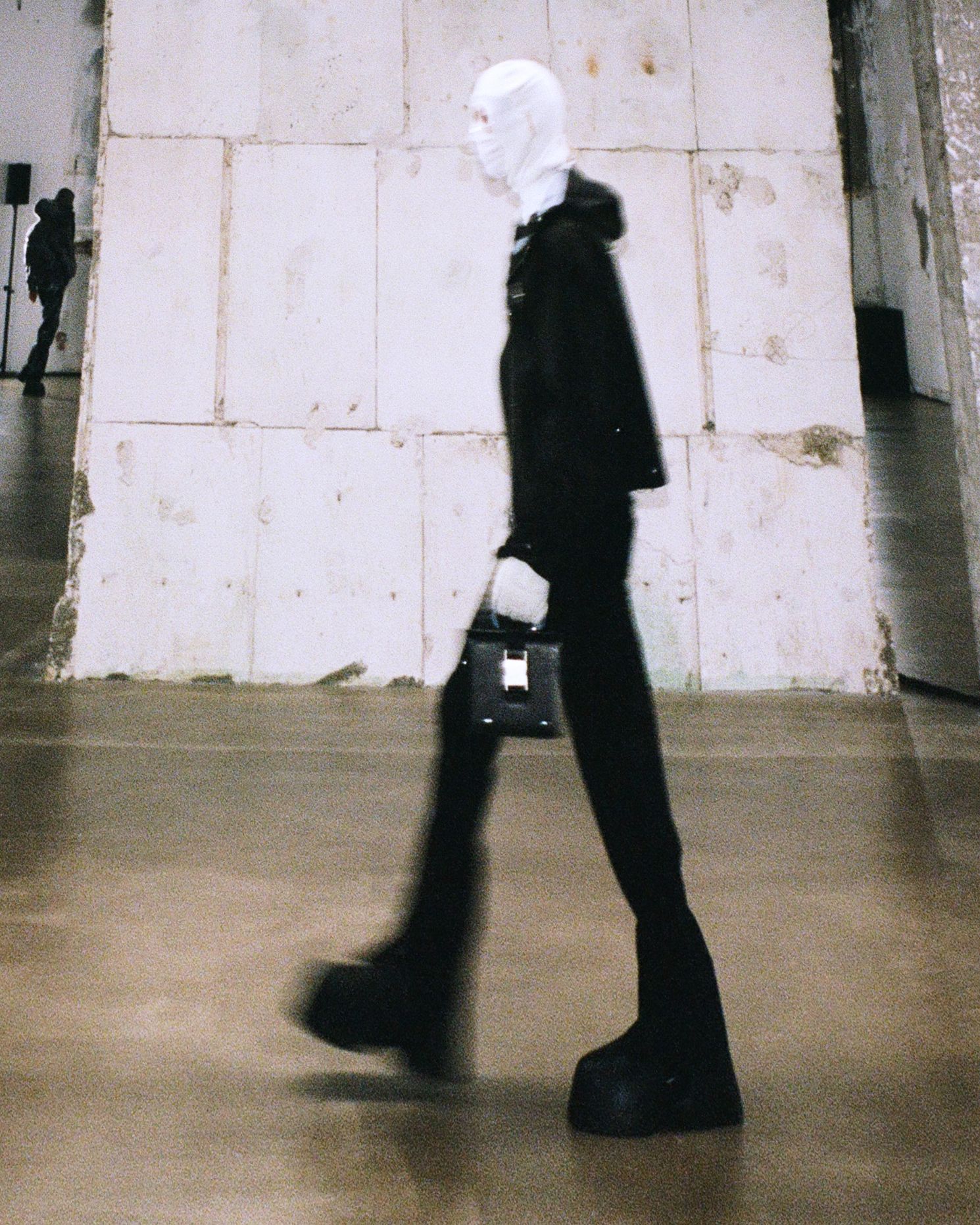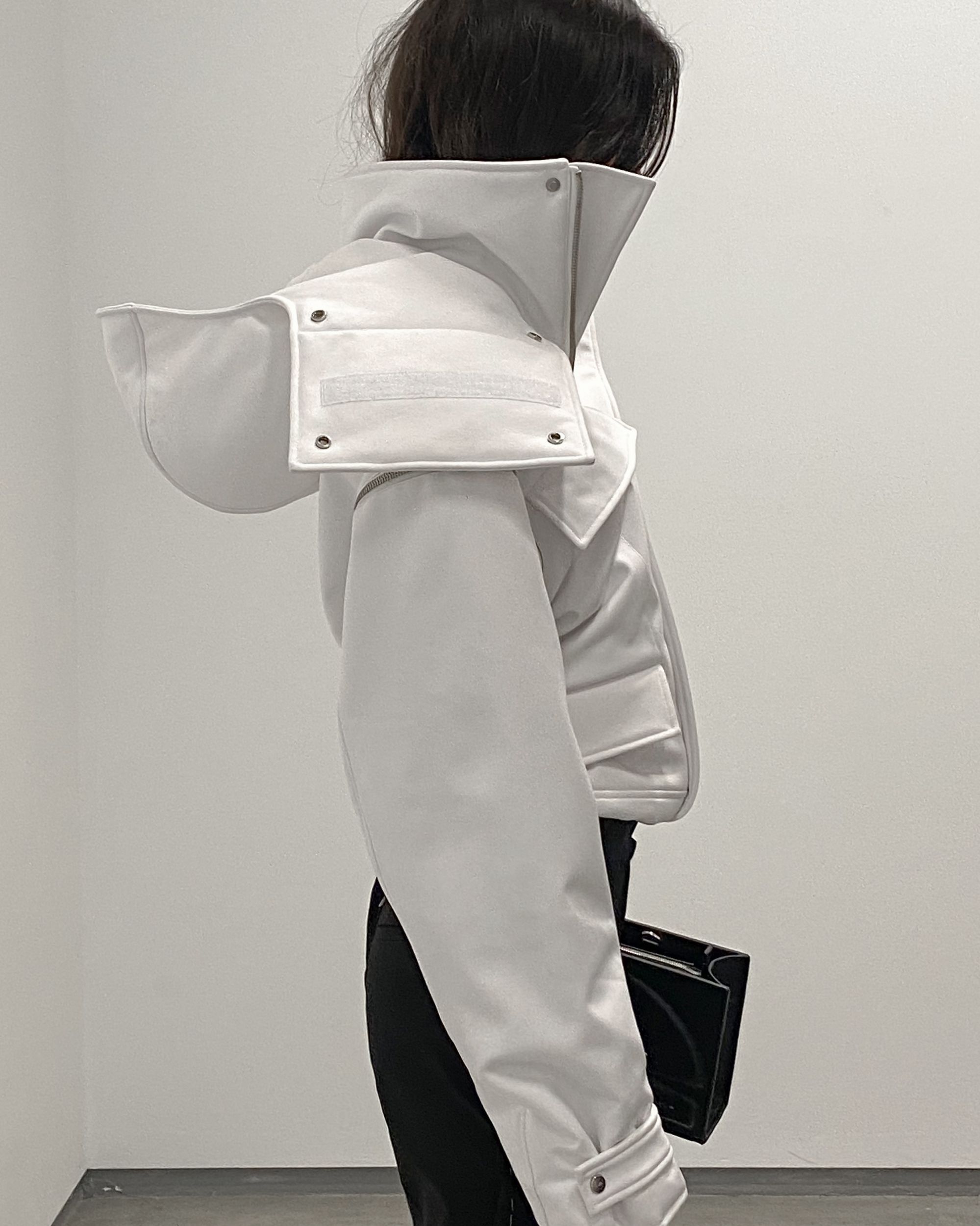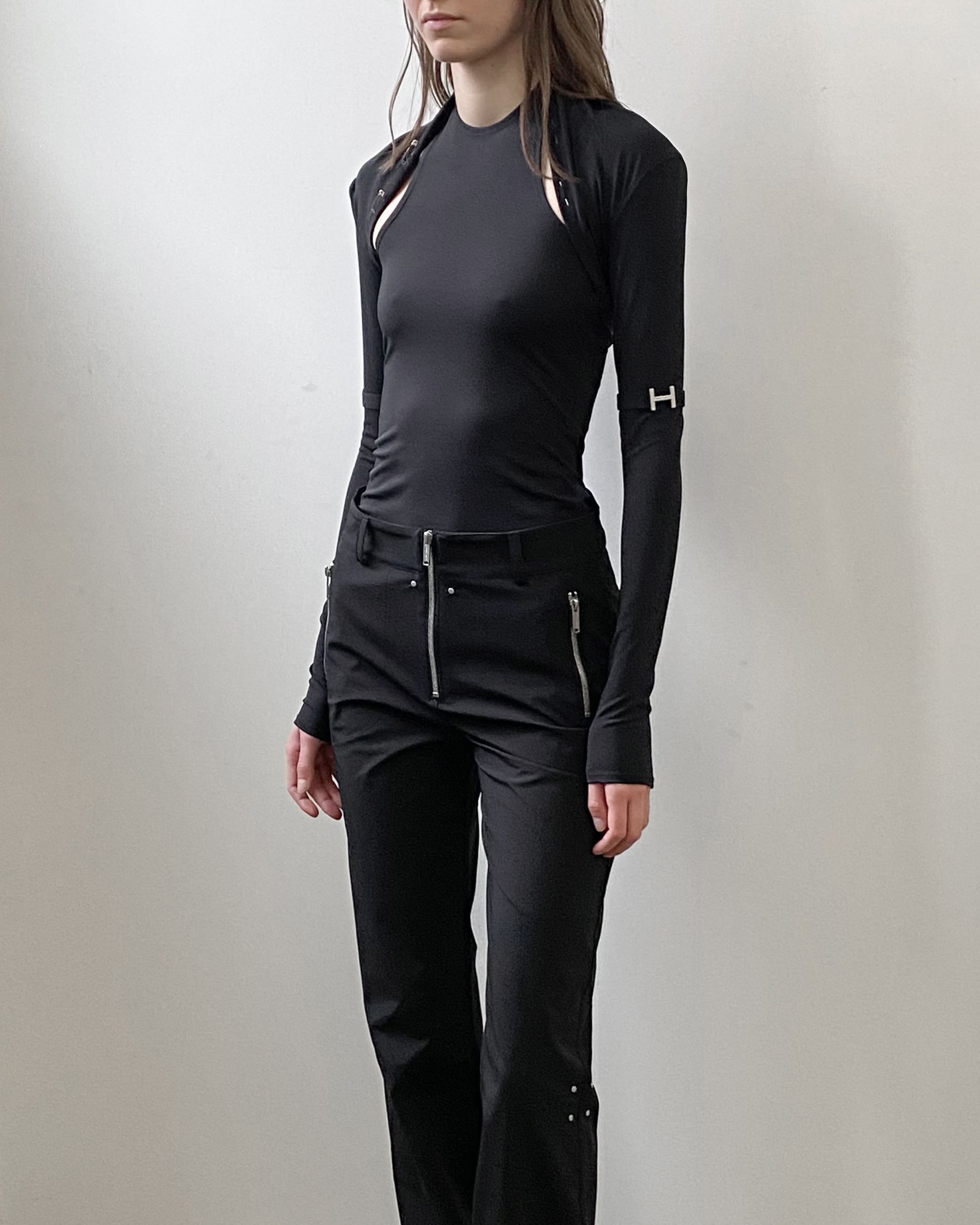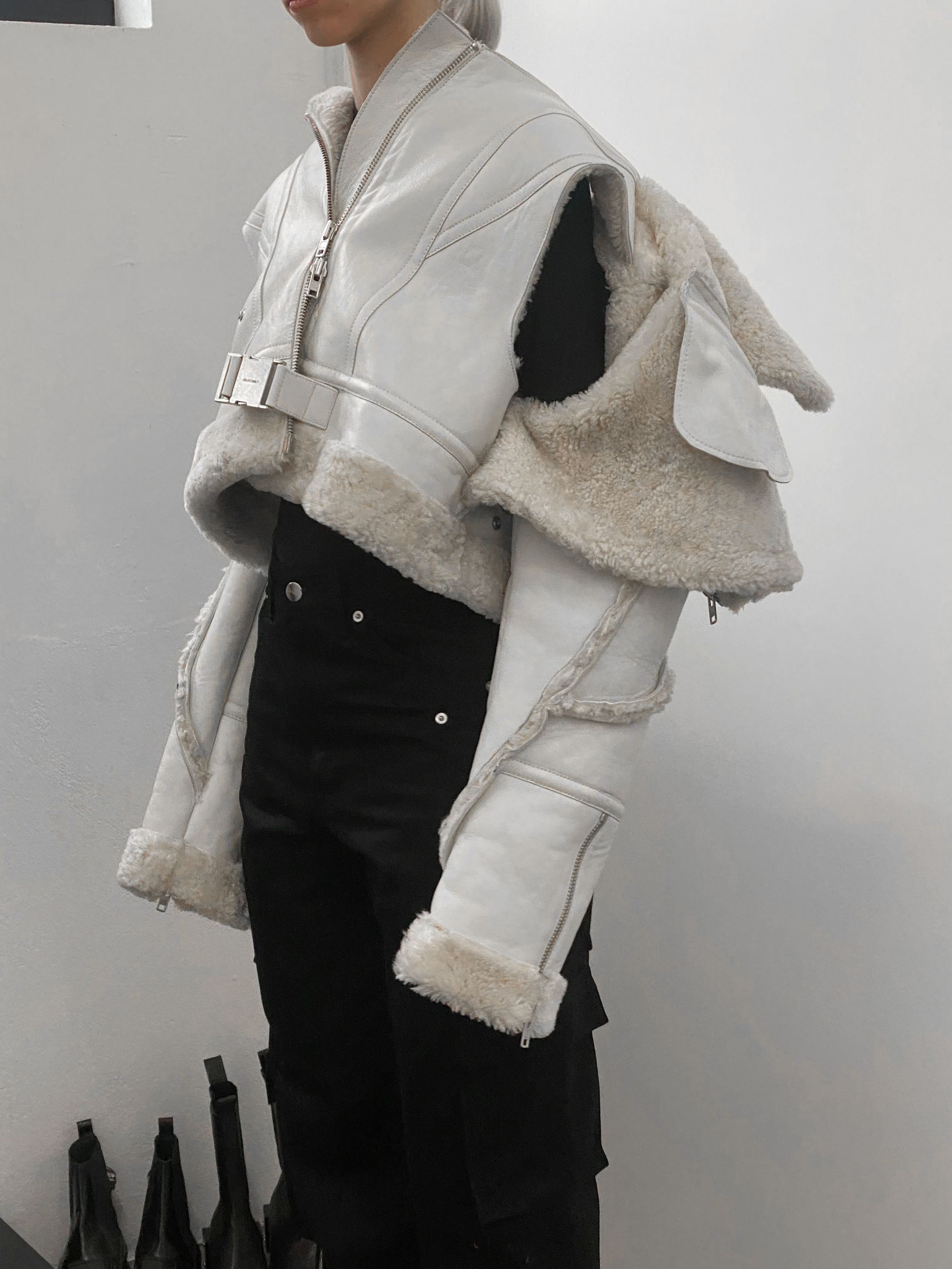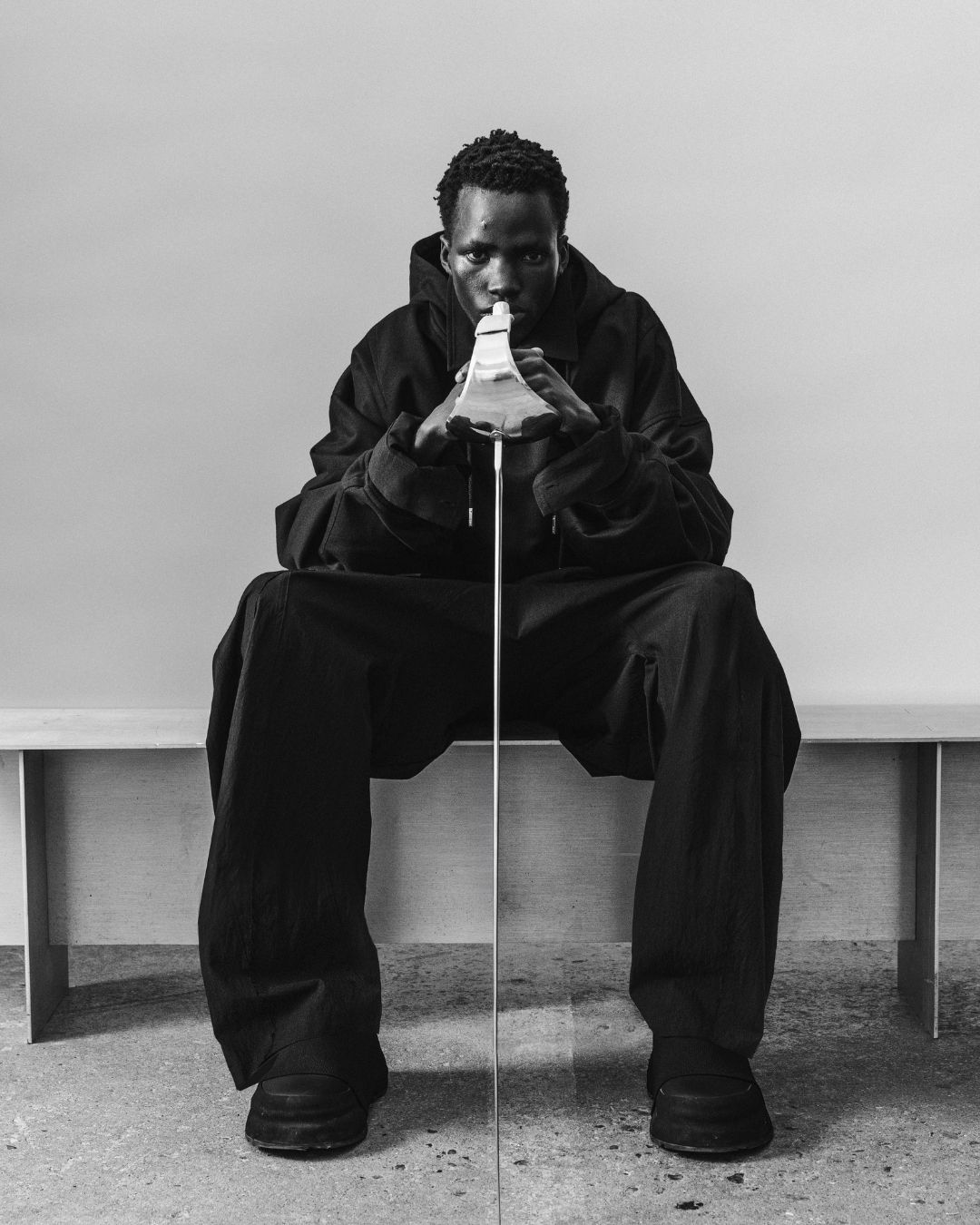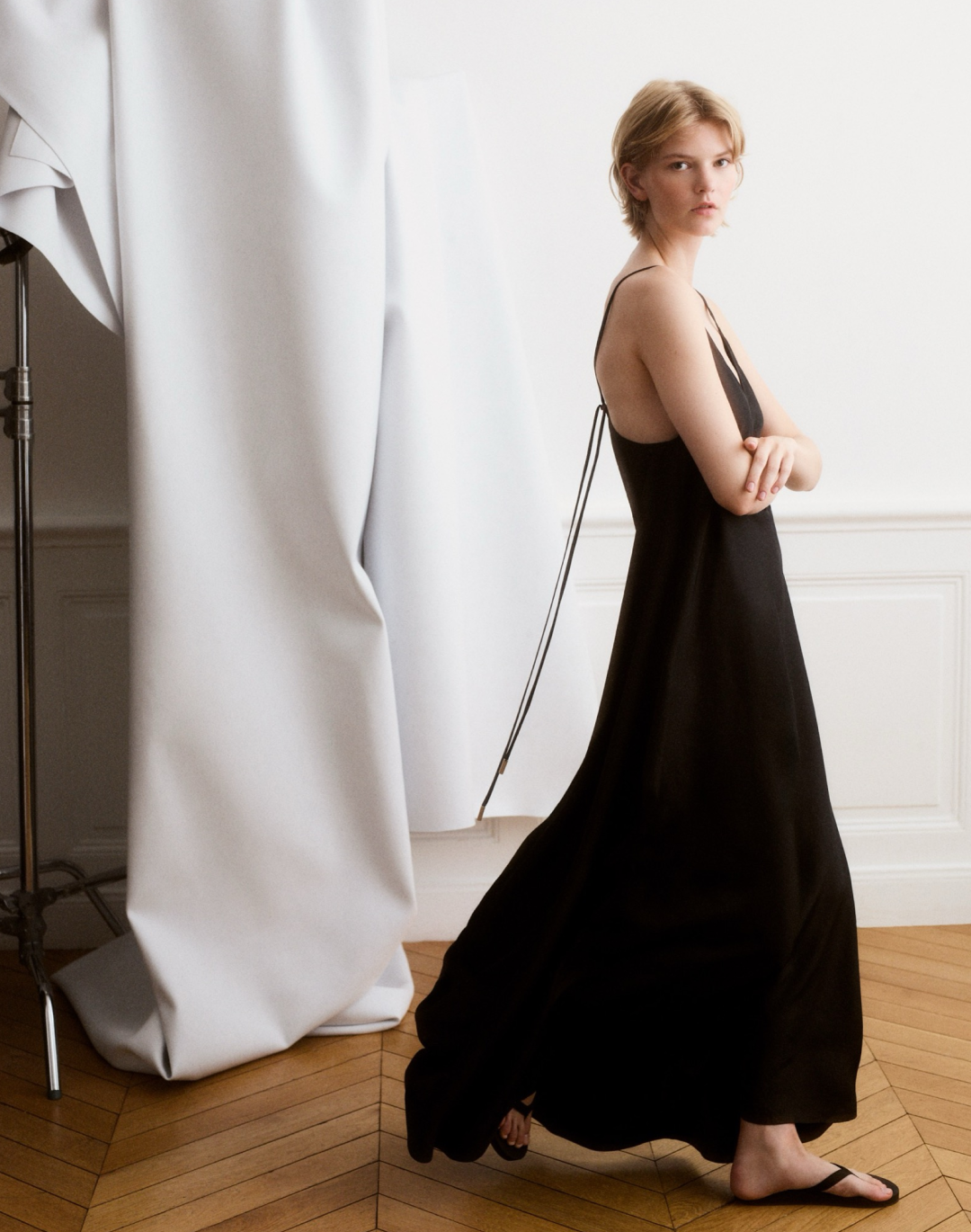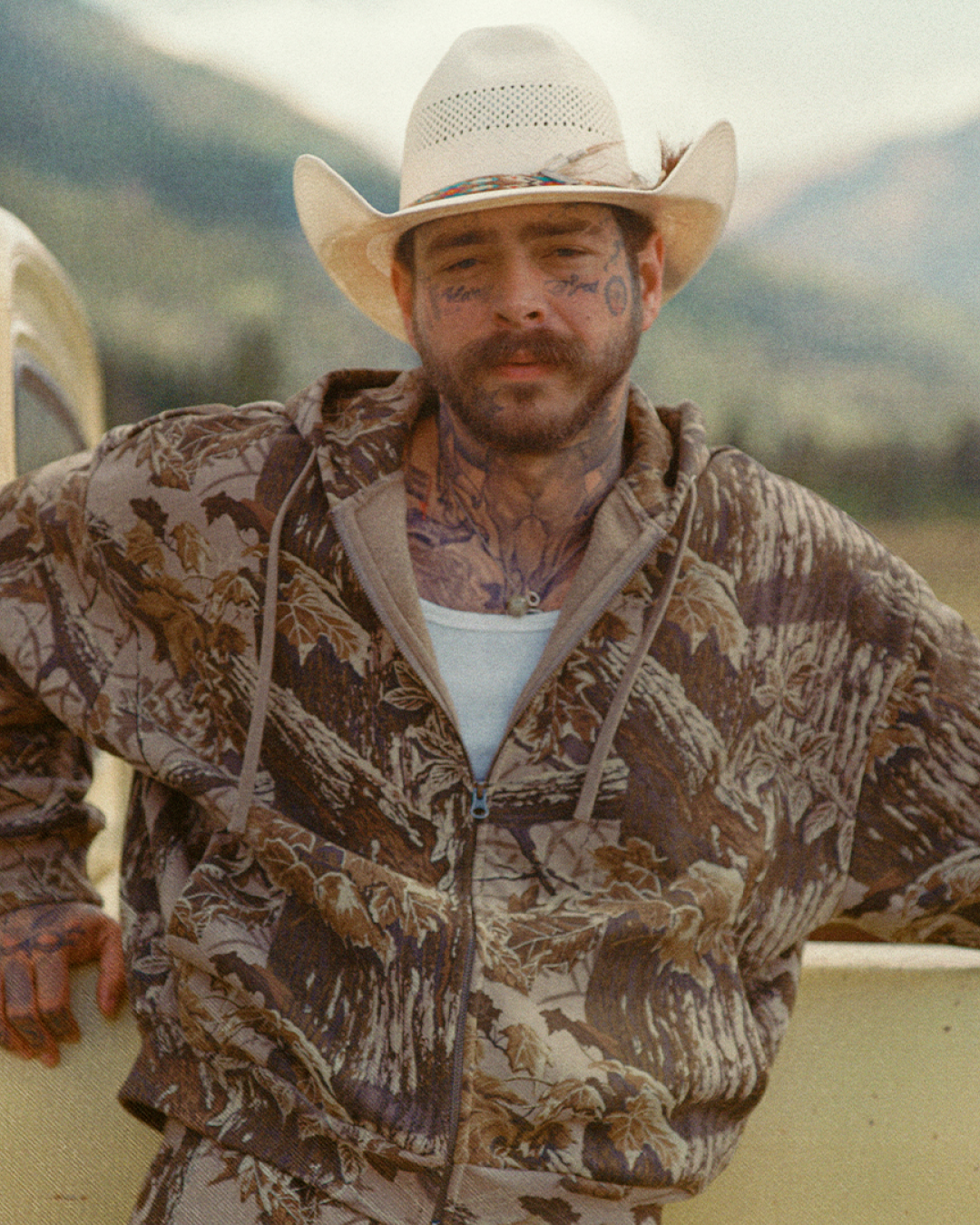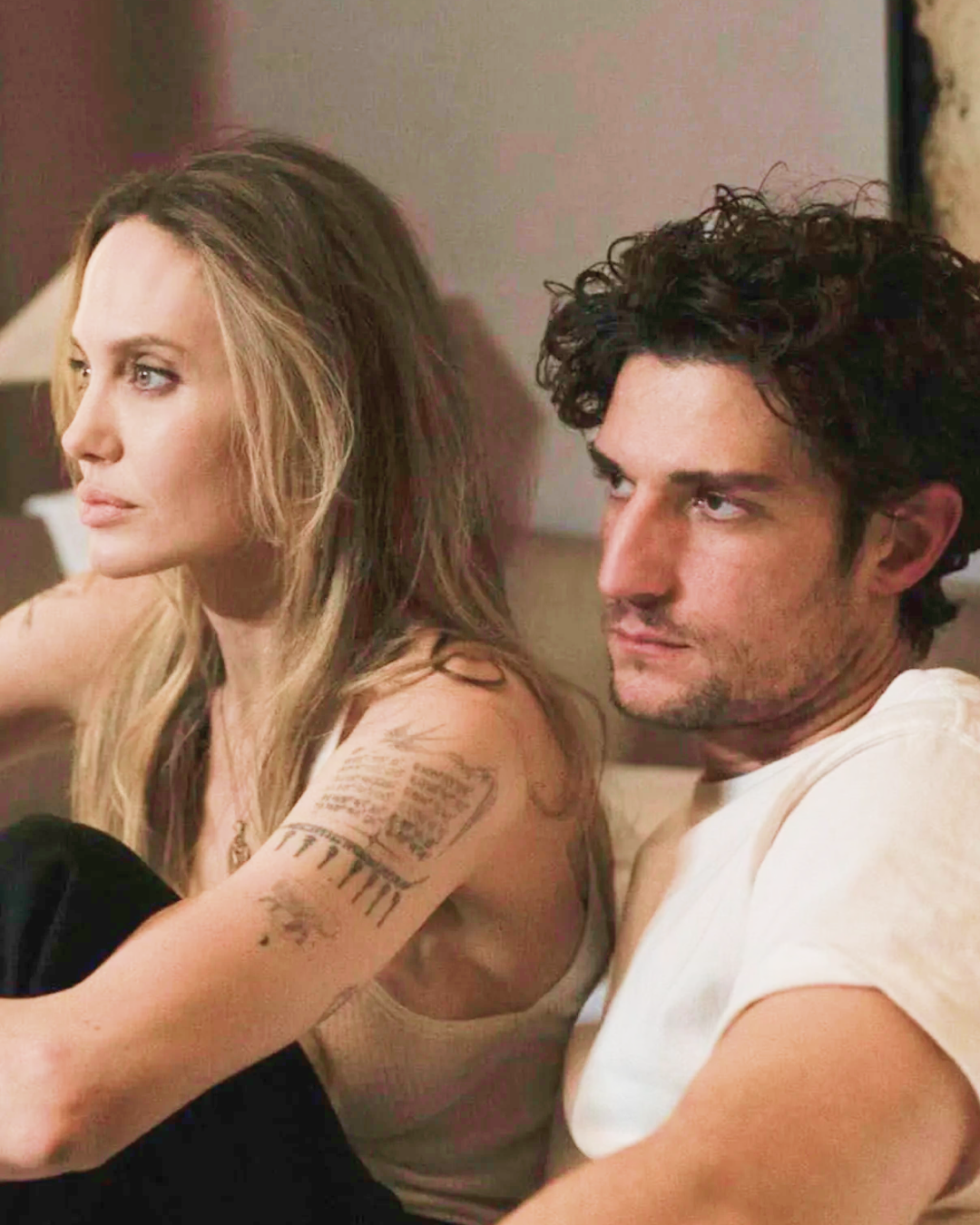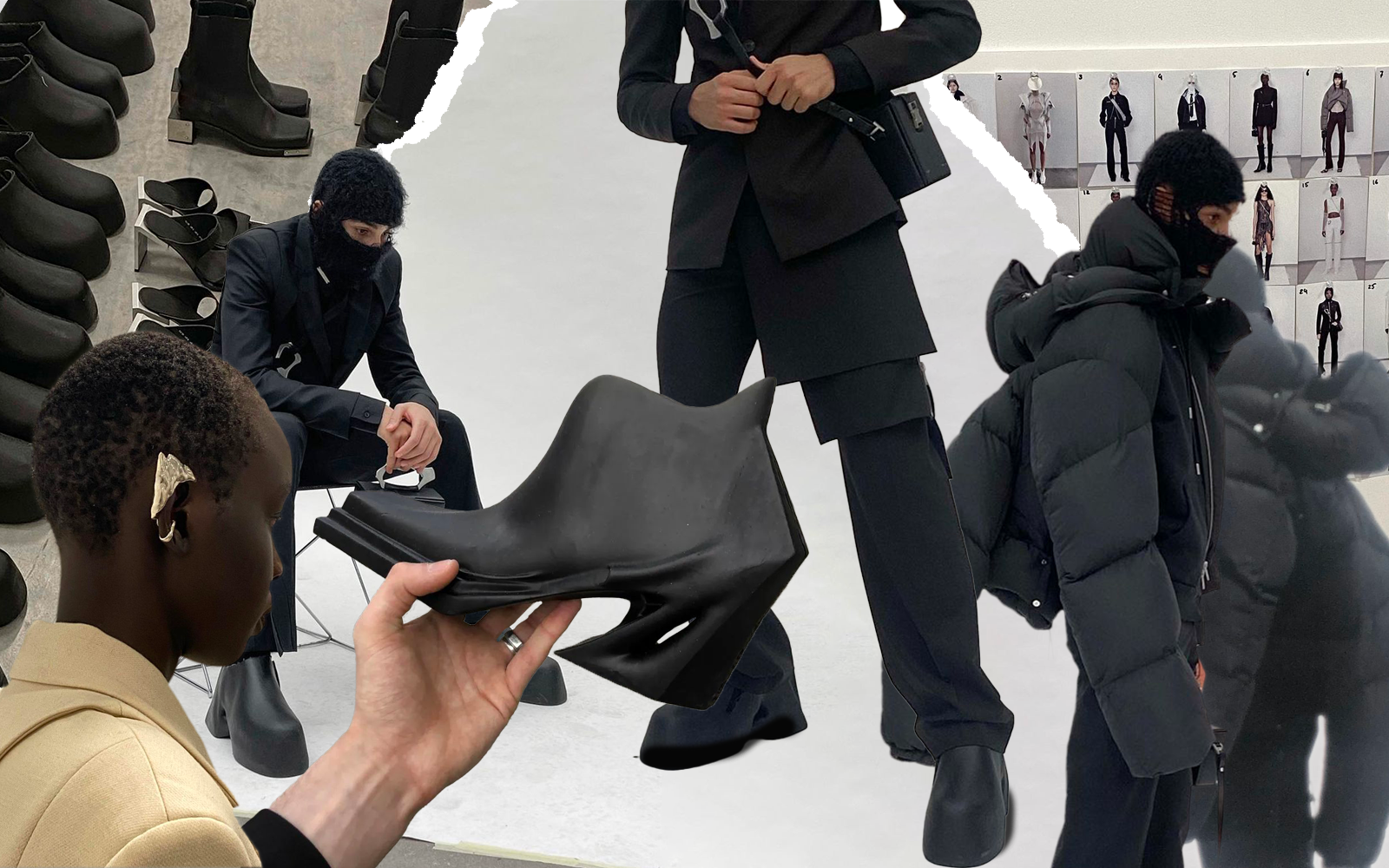
«A battle of form and function»: an interview with Heliot Emil’s Julius Juul Il designer danese ci guida alla scoperta dell’universo del suo brand
Julius Juul, the creative director of Heliot Emil, answers the video call from his studio in Copehagen - he is dressed in black, has a silver chain around his neck, and, behind him, there is a moodboard of looks and sketches pinned on a whiteboard. «We try to push the boundaries on innovation», he explains with the quietly enthusiastic voice of someone who’s recounting in a profound and simple way one of his intuitions. «Each time we go into a collection, the idea is to explore the innovation». The answer comes in regards to a question, the opening question of the interview, regarding the use of technology in Heliot Emil's SS22 collection presented in Paris during the last fashion week. Among the many elements of the collection were anti-radiation fabrics, 3D printed boots and dresses, and especially anti-tracking accessories that block GPS signals.
The very reason for the interview, in addition to the passion that the writer has for the brand since its debut in Milan in 2016, lies precisely in this kind of technological hyperbole that, in fashion, is rarely seen. «We’re aspiring to show the contemporary culture and reflect what’s going on in the world and see if we can give a better perspective on what that looks like into our world», Julius says. «The GPS Blocking technology came from the idea that we constantly integrate technology into our world – the phone it’s almost a part of our body. […] You always have your phone on you, it’s almost like having an extended part of your body on – and so we’re dealing with this issue […]. Similarly to how certain brands are talking about body positivity or gender fluidity, we wanted to bring something like mental health in the conversation».The idea is intriguing: instead of posting a written message or falling into performativity, Juul and his brand's response was to create a fashion accessory that can directly address the problem, while indirectly providing a very specific point of view. There's irony, there's a statement, but there's also wit - there is, above all, a practical solution to an everyday problem: that's design.
Innovation without rhetoric - this is how we could define the more technical aspect of Heliot Emil's universe (it is a universe: the brand, by the way, is about to launch its first furniture line) that when faced with a problem in the world prefers to respond with a good practice. Speaking about GPS Blocking and its link to the issue of mental health Julius said: «We didn’t want to offer specific solutions, but just to open up the conversation». Another example of this intellectual approach is the brand's relationship with sustainability - promoted through a study of 3D printing techniques: «When you 3D-print a product everything is reusable, you can take that same piece and mold into a new shape – and also there’s no waste, fabric or otherwise. When you’re 3D-printing there’s no excess material, you just print the piece that you need. Imagine in the future a store where they can 3D-print the garment in your specific size on the spot – there’s no overproduction, or too specific sizes but also no waste», he says, shortly after telling me how, in addition to having 3D printed the boots presented during the collection, he tells of how, for the same collection, the brand has created a dress with the same technique: «Each piece is printed in diagonal shapes that are layered on top of each other, so the material becomes stretchy and you can move around in it, without it looking too flat».
The reason for this drive towards constant innovation certainly lies in Julius' mental attitude. «It’s interesting for me to show to people what is out there right now», he says, «this is what we can do right now, what’s the next steps?» It's clear that this kind of approach, beyond personal taste, also passes through a reasoning on the functionality of the clothes: anyone who knows the brand or has seen even a single collection knows that the fusion of functional elements and sharp, layered silhouettes defines its general aesthetic. «We call it “industrial elegance”», says Julius. An approach that has elegance as an end but technicality as a means, through all those industrial details borrowed from the functionality of the clothing of areas ranging from fishing, agriculture, hunting or sailing.
«All those details are made because of the functionality», he continues, «and I want to integrate them into the fashion industry where sometimes the function is just a form. Looking at those details and integrating them is a constant battle between form and function – that’s our kind of exploration». A battle that is played out on the field of fashion, between invisible craftsmanship and visible showmanship. The aim of all this, of course, is to arrive at an ever better definition of an identity that is expanding - it's no coincidence that Julius often uses the term "universe" to talk about his work: «I believe in creating a universe where everything aligns. The product is something that I can get tired of, but not the universe. I believe in creating a strong concept – people don’t buy what you do, people buy why you do it».
At this point the question arises as to what the concept of the SS22 show in Paris was, given also the oxymoron of its title: how can a uniform be "solitary"? The inspiration for the title came from the limestone miners in Morocco, captured in photos in the midst of their work - their clothes are different from each other, yet the conformity of the colors and wear of the fabrics, the patina of dust that covers them, identifies all those men as members of the same group - thus, a uniform. «Having a uniform means being part of a group or an entity. The “solitary” part means being an individual who is in a uniform – it’s a paradox, it’s contradicting. How can we create a cohesive collection where each piece feels unique? We explored different uniform through the time, their language – but also we explored how to make each garment speak uniquely. What if you can modify the garment yourself?» From this question has started a whole reasoning that, on the catwalk, has been translated into a series of modular and dynamic garments that through a system of buttons and straps can be worn in many different ways or, in the words of Julius: «They’re part of a uniform but it’s solitary because you wear it how you want it». Yet another wink towards that future of the industry that Julius wants to turn into a present with each collection.
It seems like a complicated road: reflecting the image of the world but through the mirror of one's own identity - or, in the case of Julius, his brother, and his entire design team, one's own universe. To approach this road consistently, however, you simply need to put one foot in front of the other. «It’s about taking small steps, while maintaing a certain identity, and a language and a focus», Julius explains when I ask him how he maintains so much consistency collection after collection, while also maintaining a color palette hyper-limited to black, white and metal. Julius explains his love of minimalist color as follows: «Your concept and your direction work better without the extra visual elements – when i’m designing, it’s important that the silhouette and the garments are one thing. And it just works on that black color - it’s the simplest color». Once again the absolute importance of the concept comes into play, its ability to unify all the different aspects of Heliot Emil's universe in the same, layered harmony: the silhouette is not composed of clothes, it is the dress; accessories such as straps and buttons are as much decorative as they are structural; the materials do not evoke the idea of performance but put it directly into practice; the clothes themselves do not make us imagine the future but want to be the future.










































